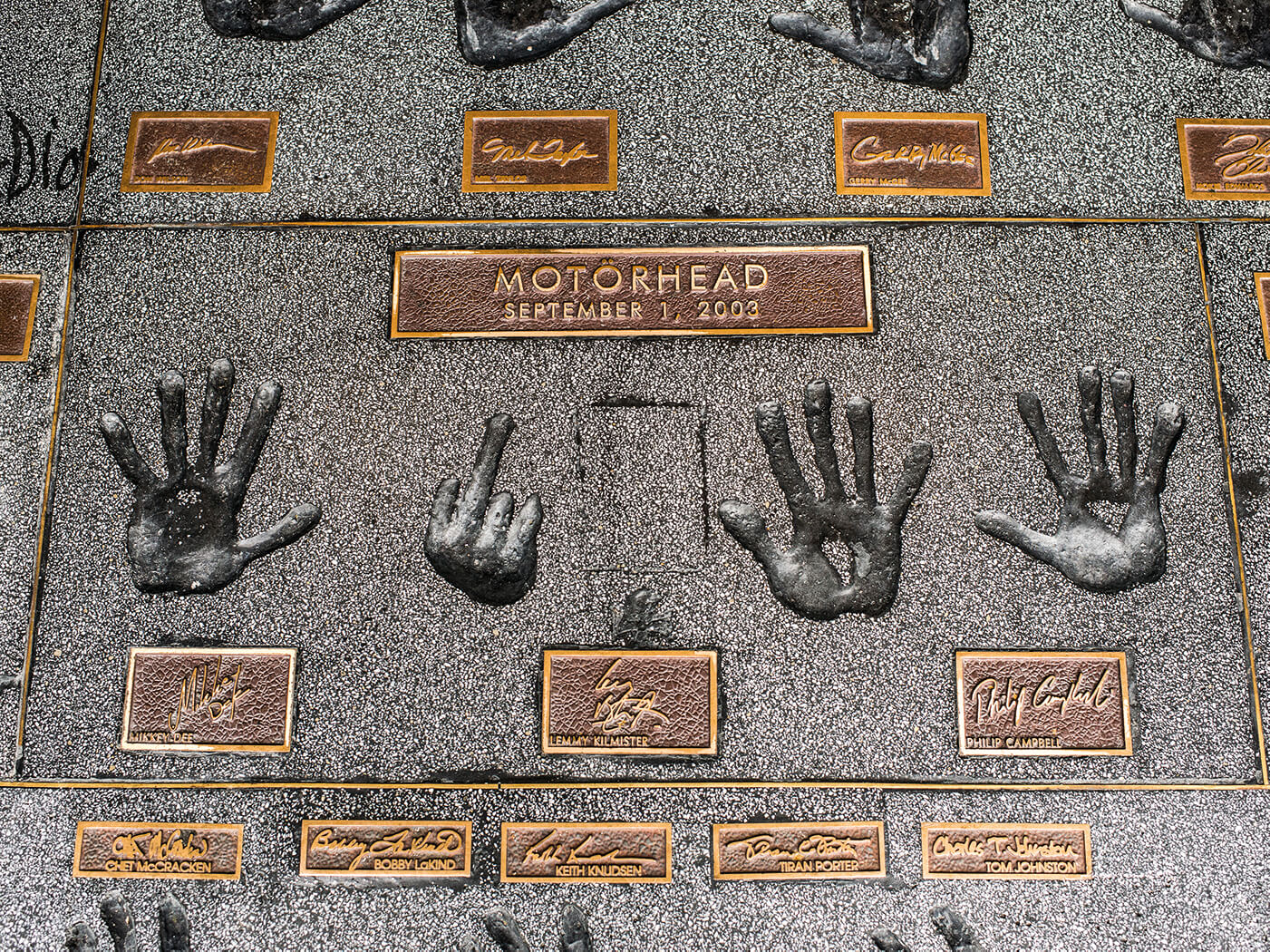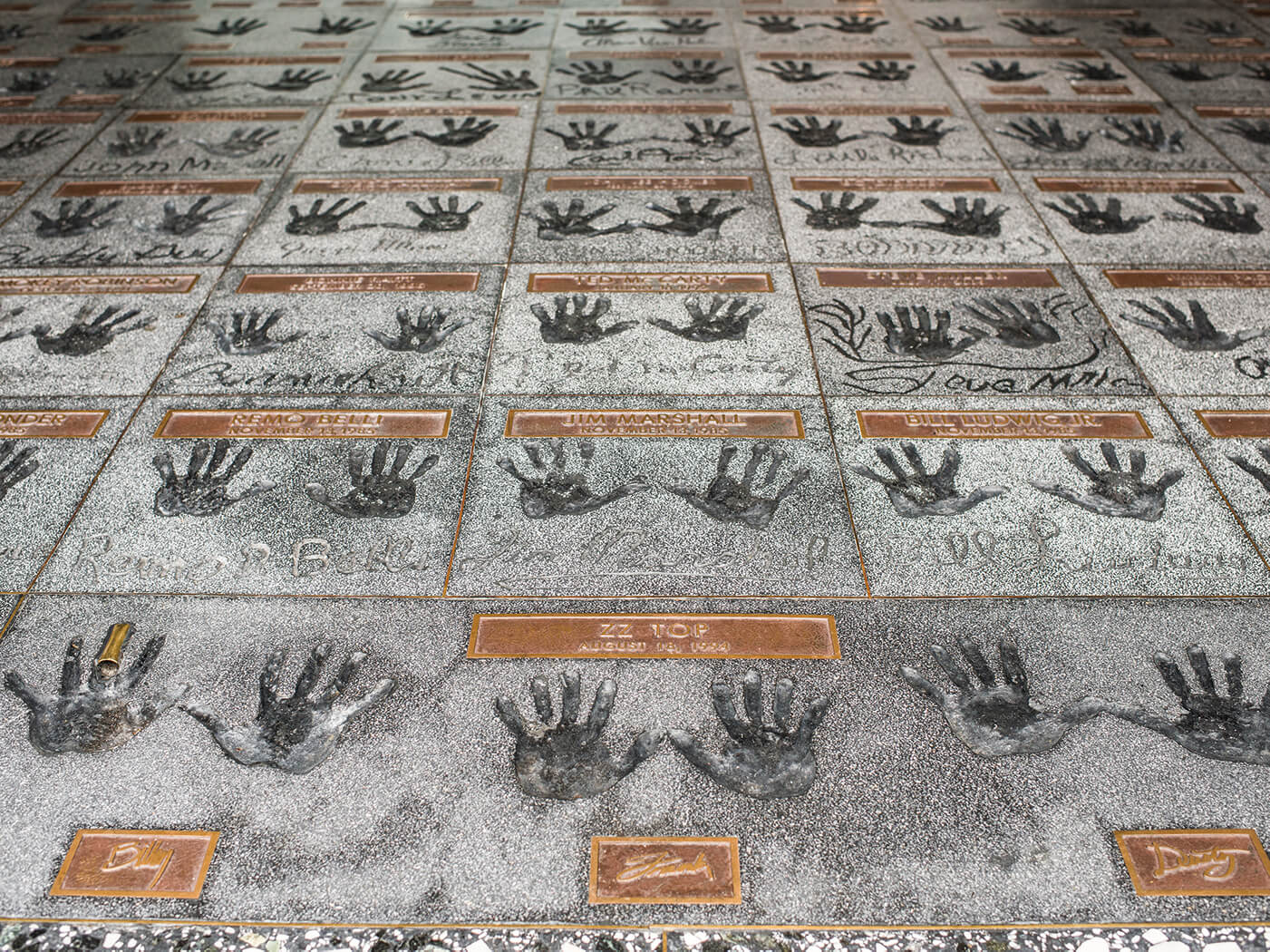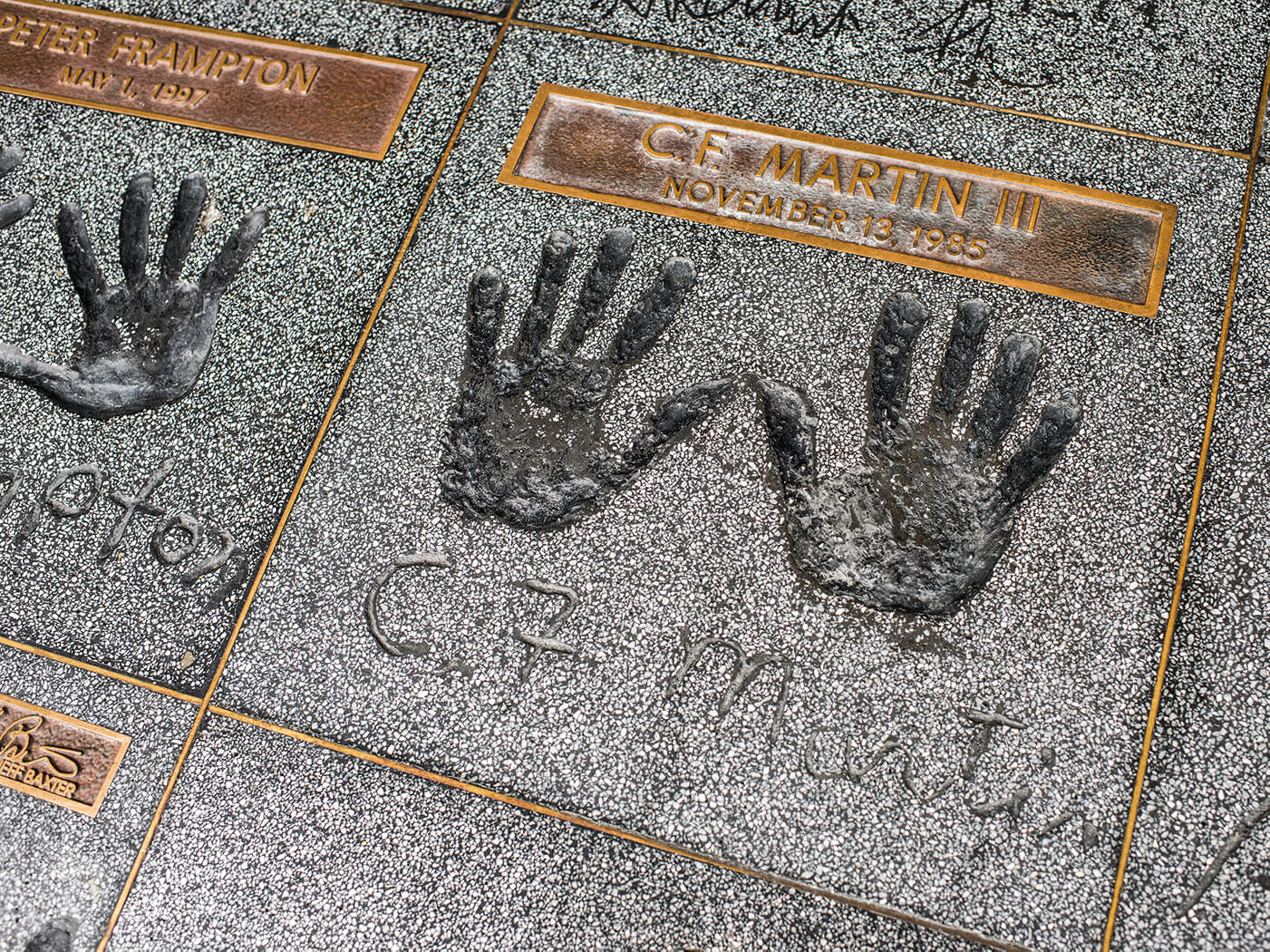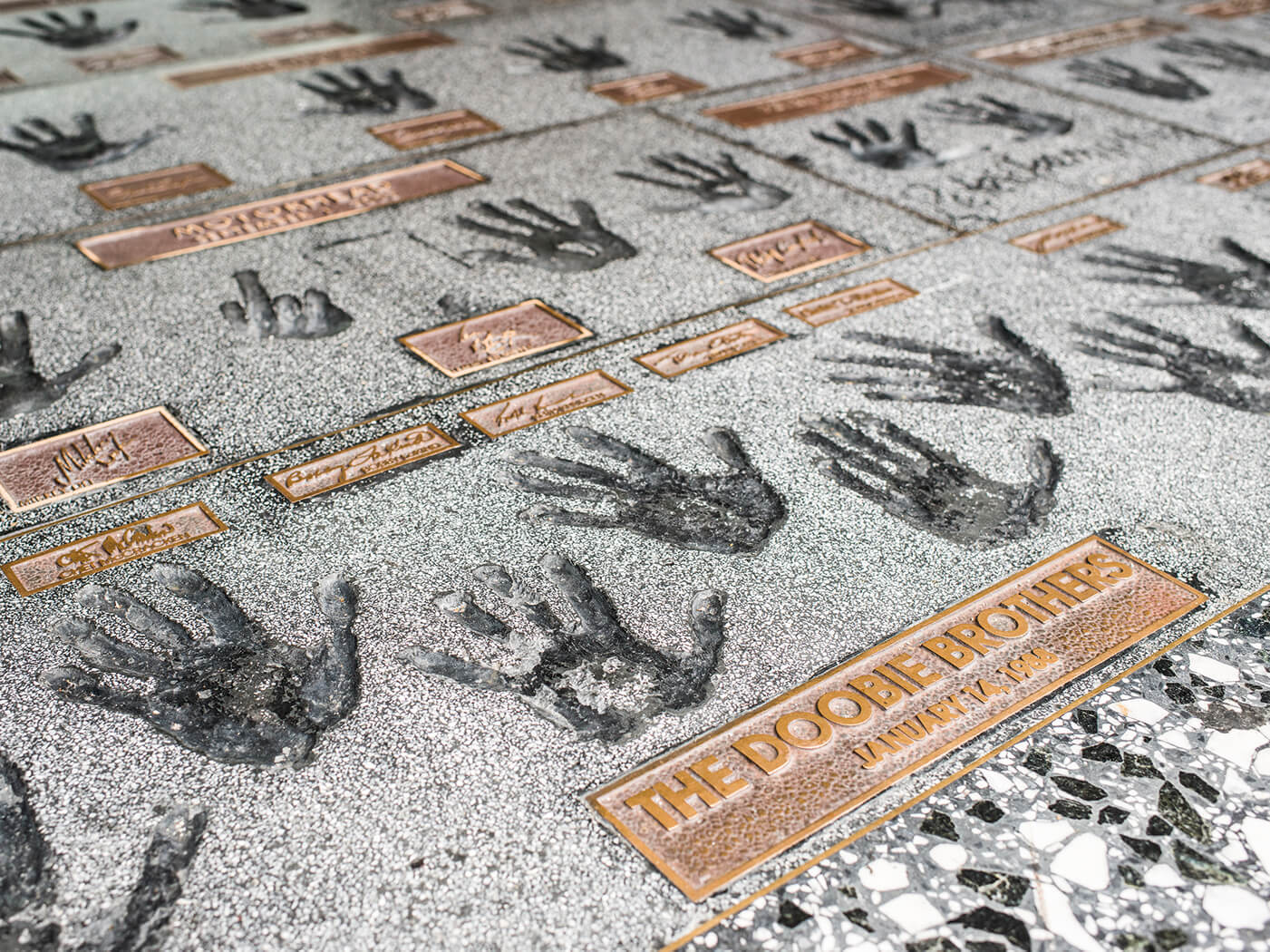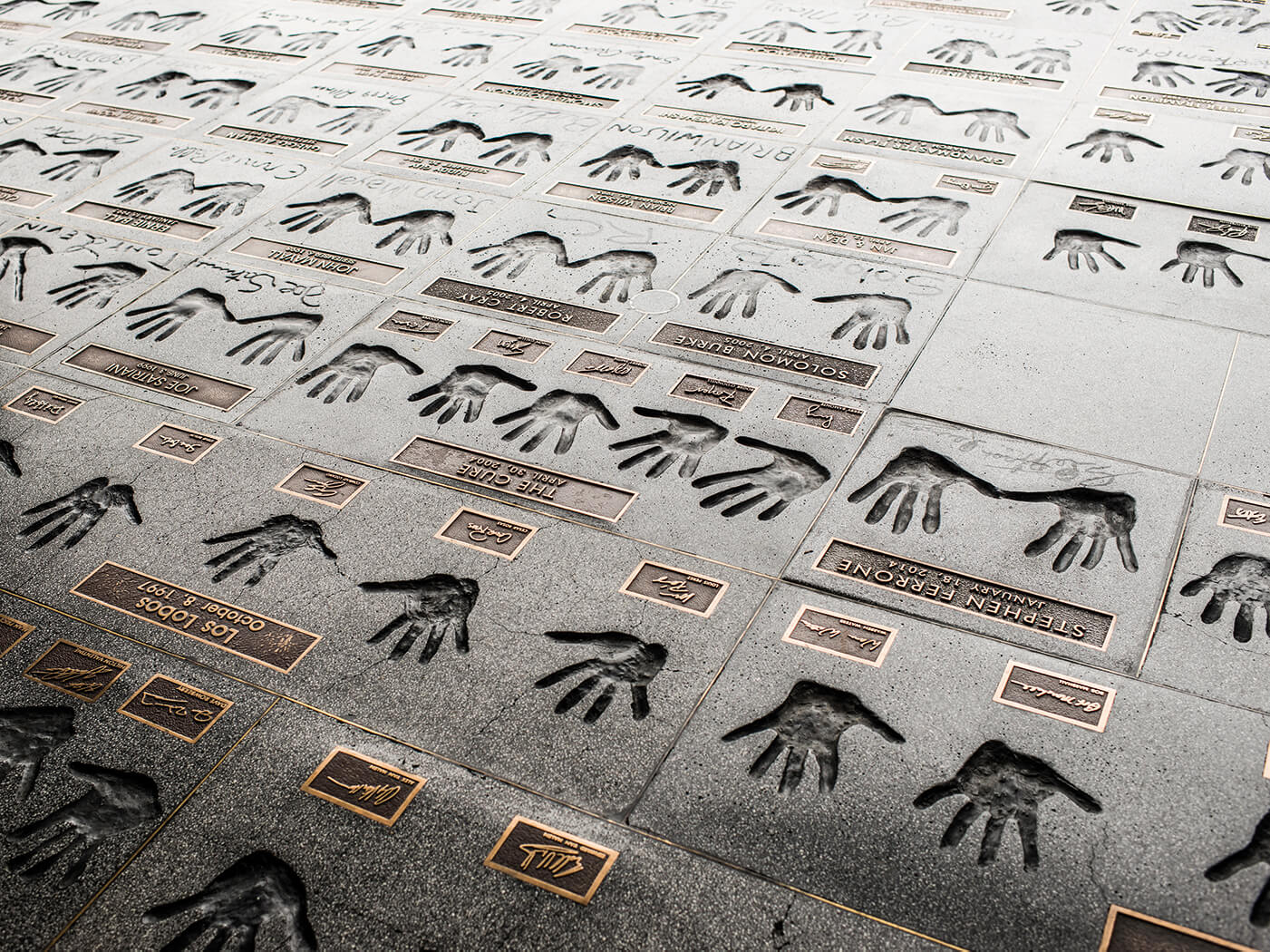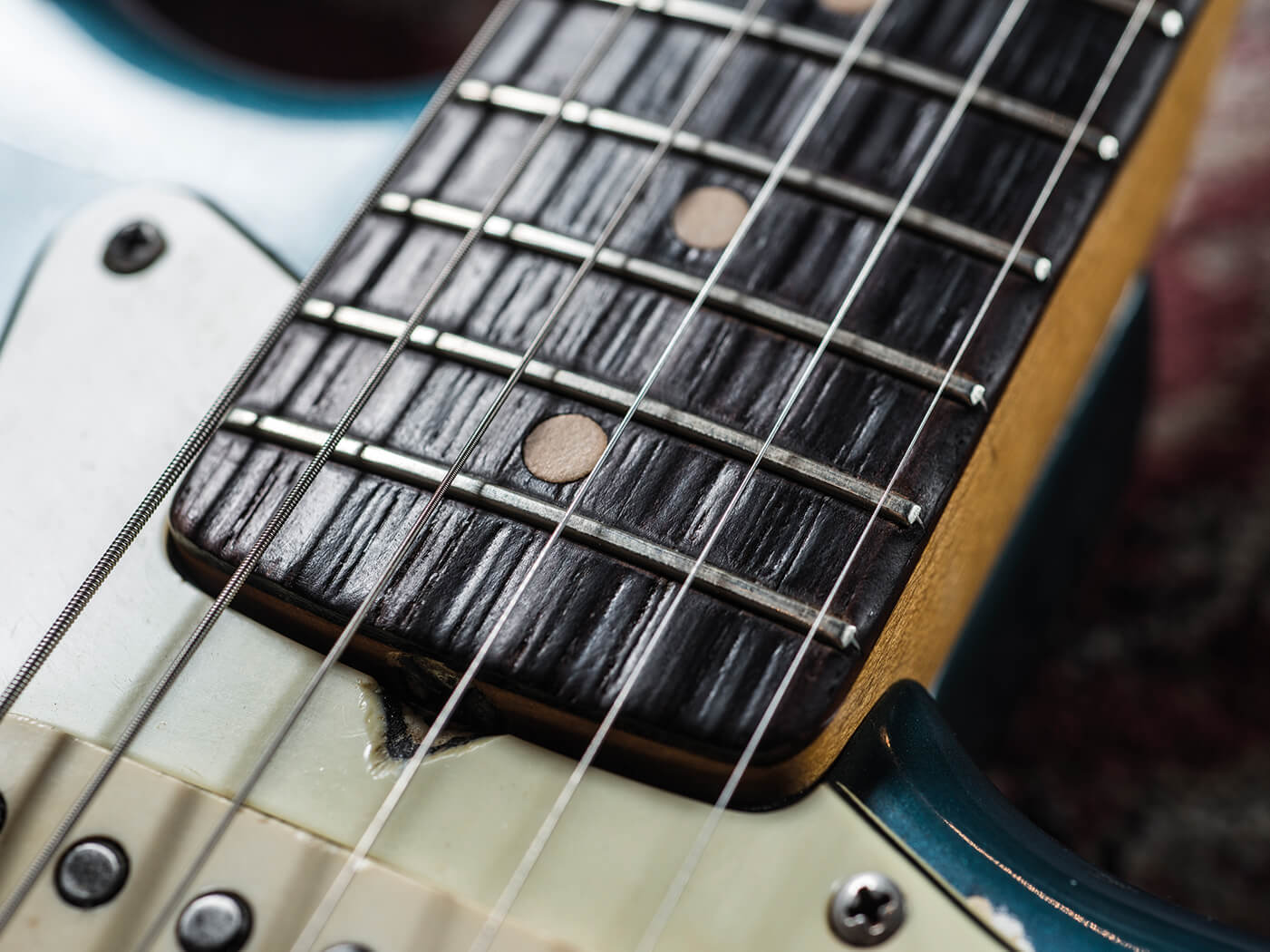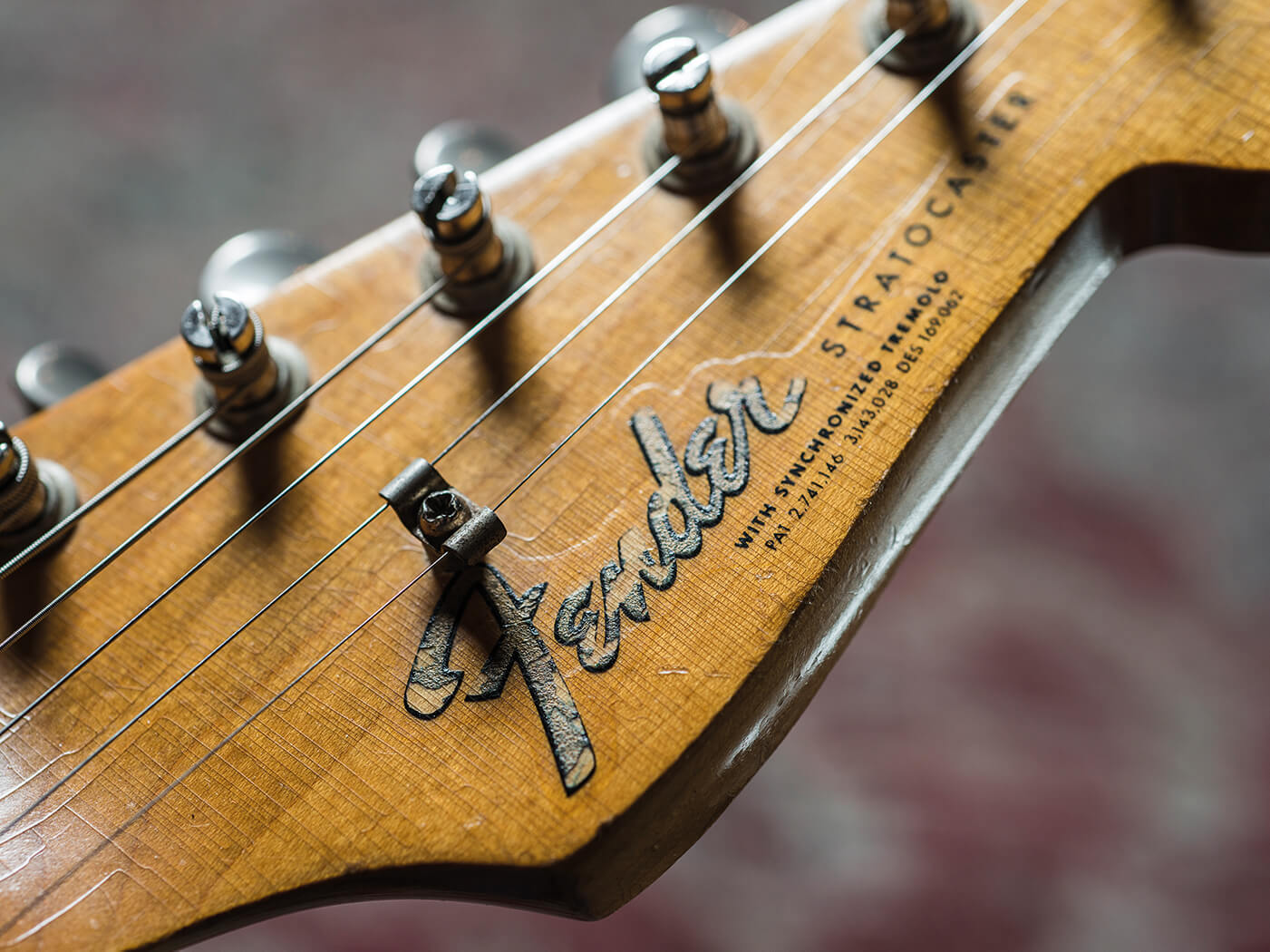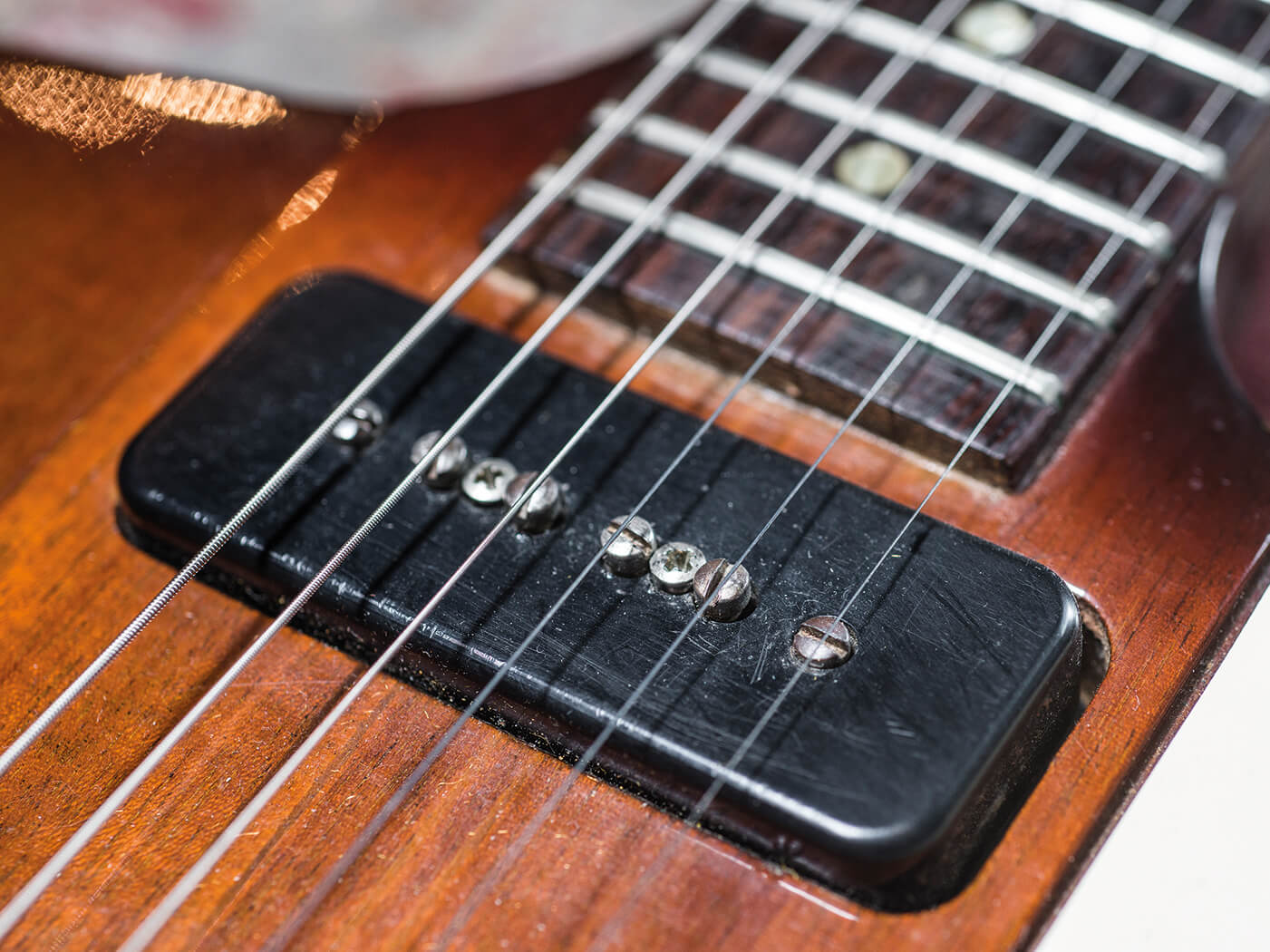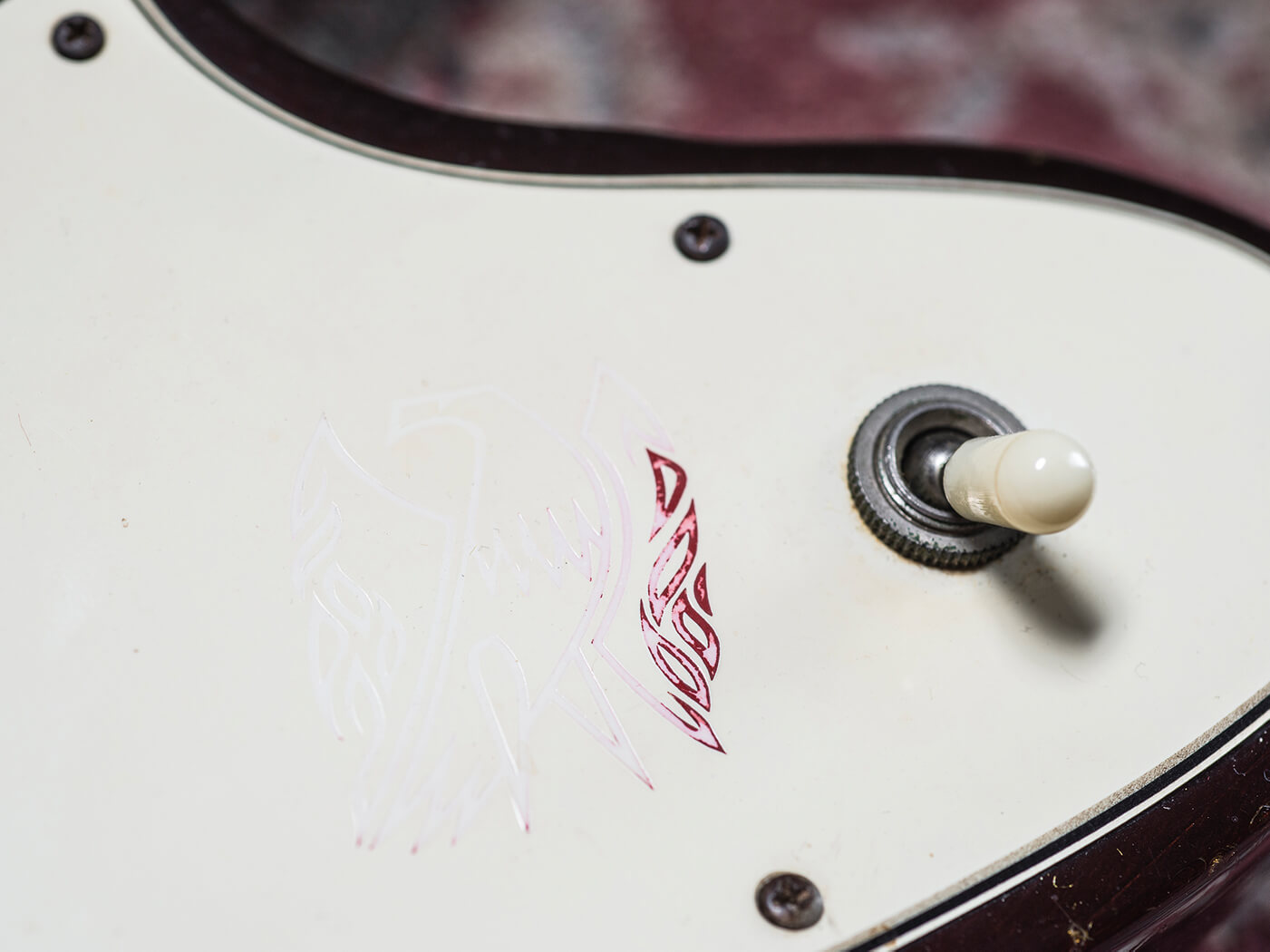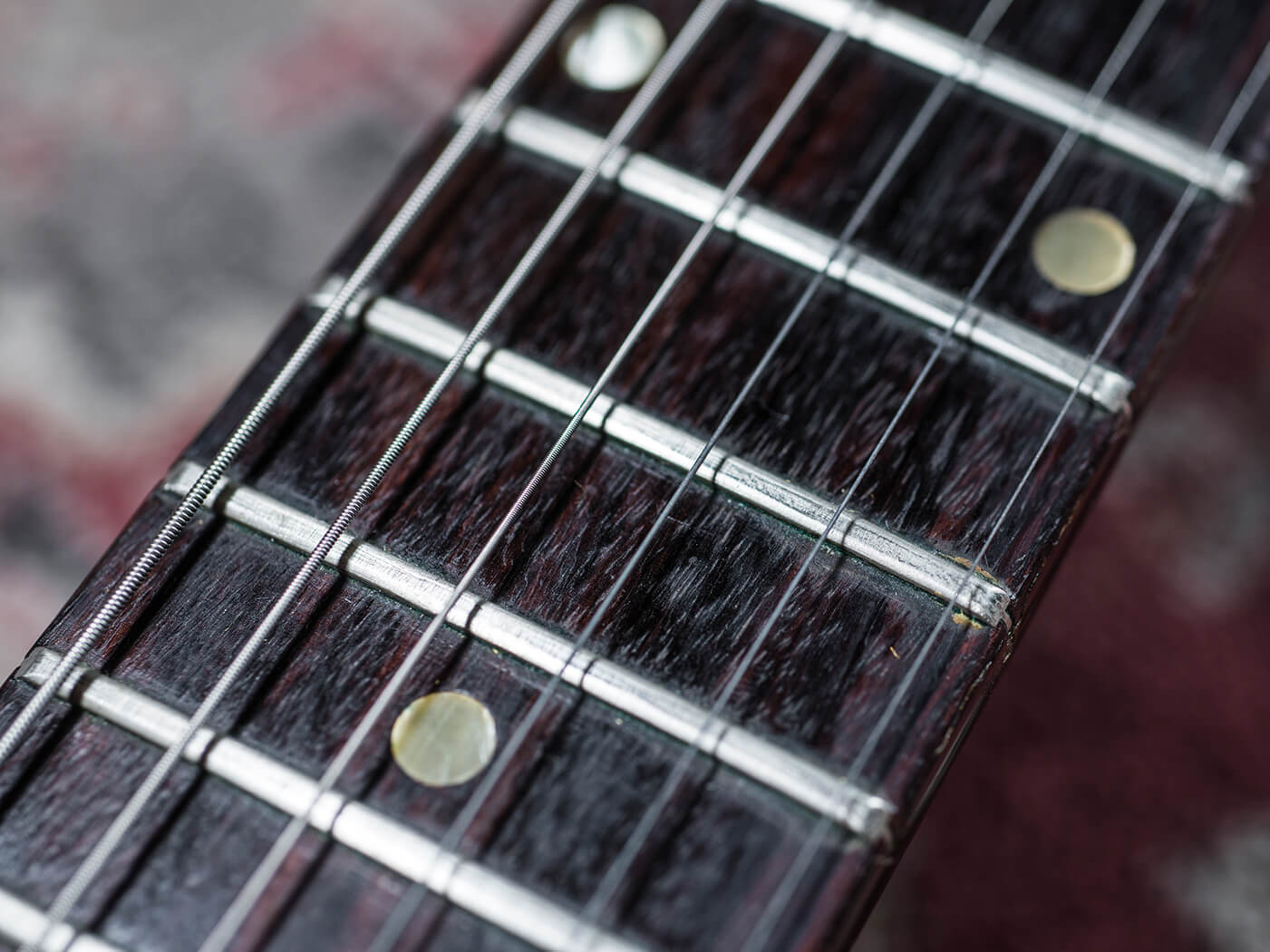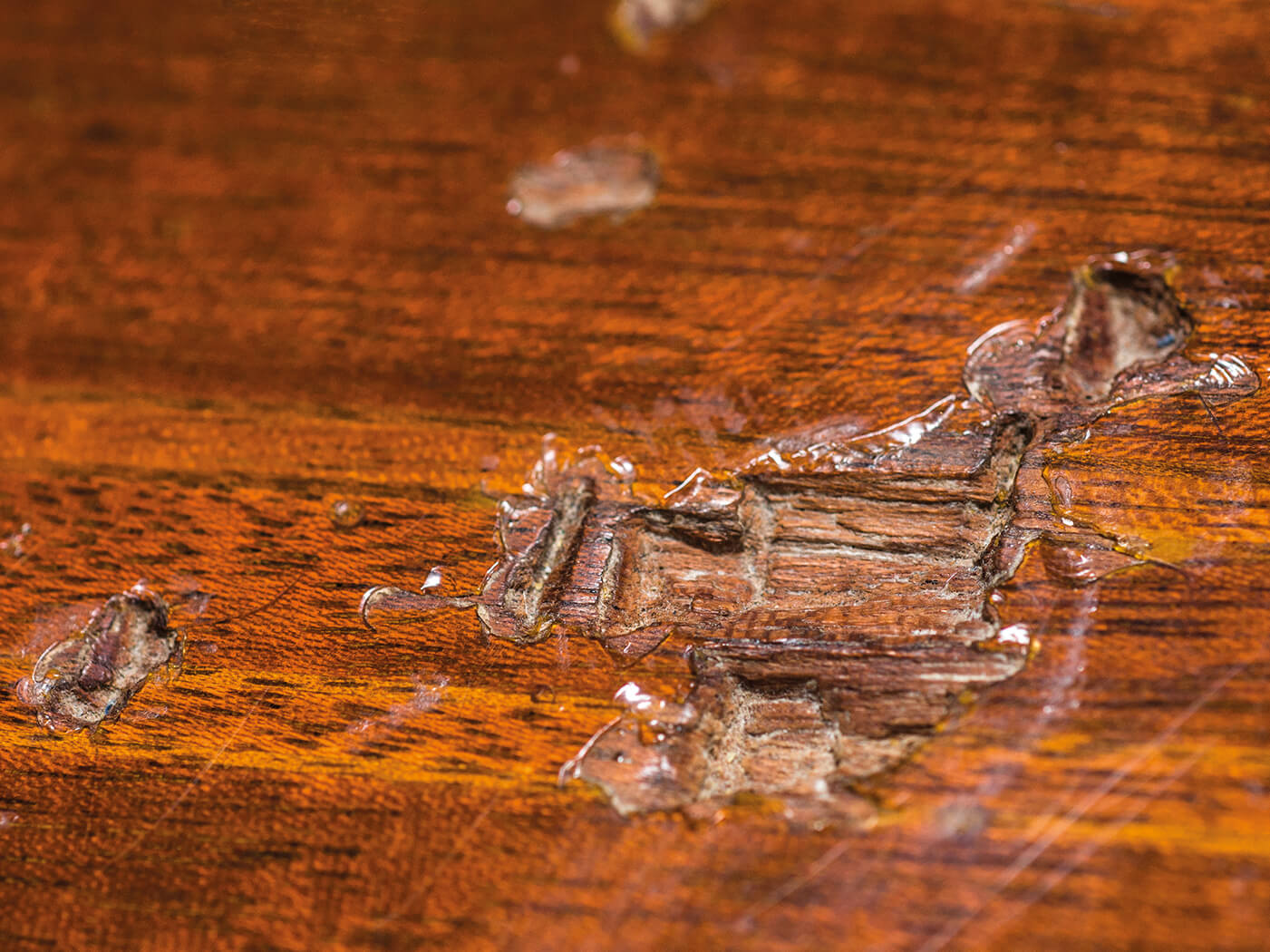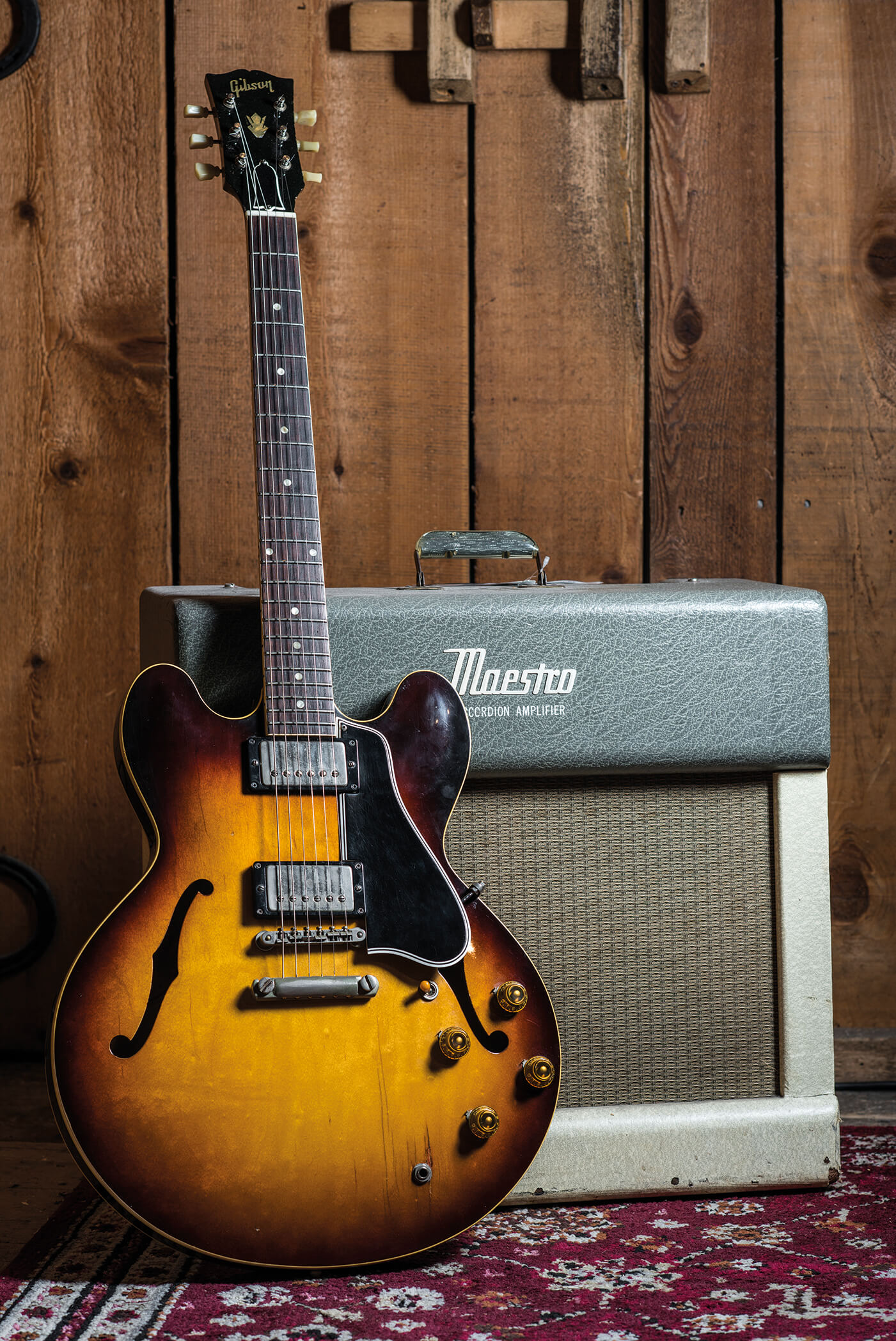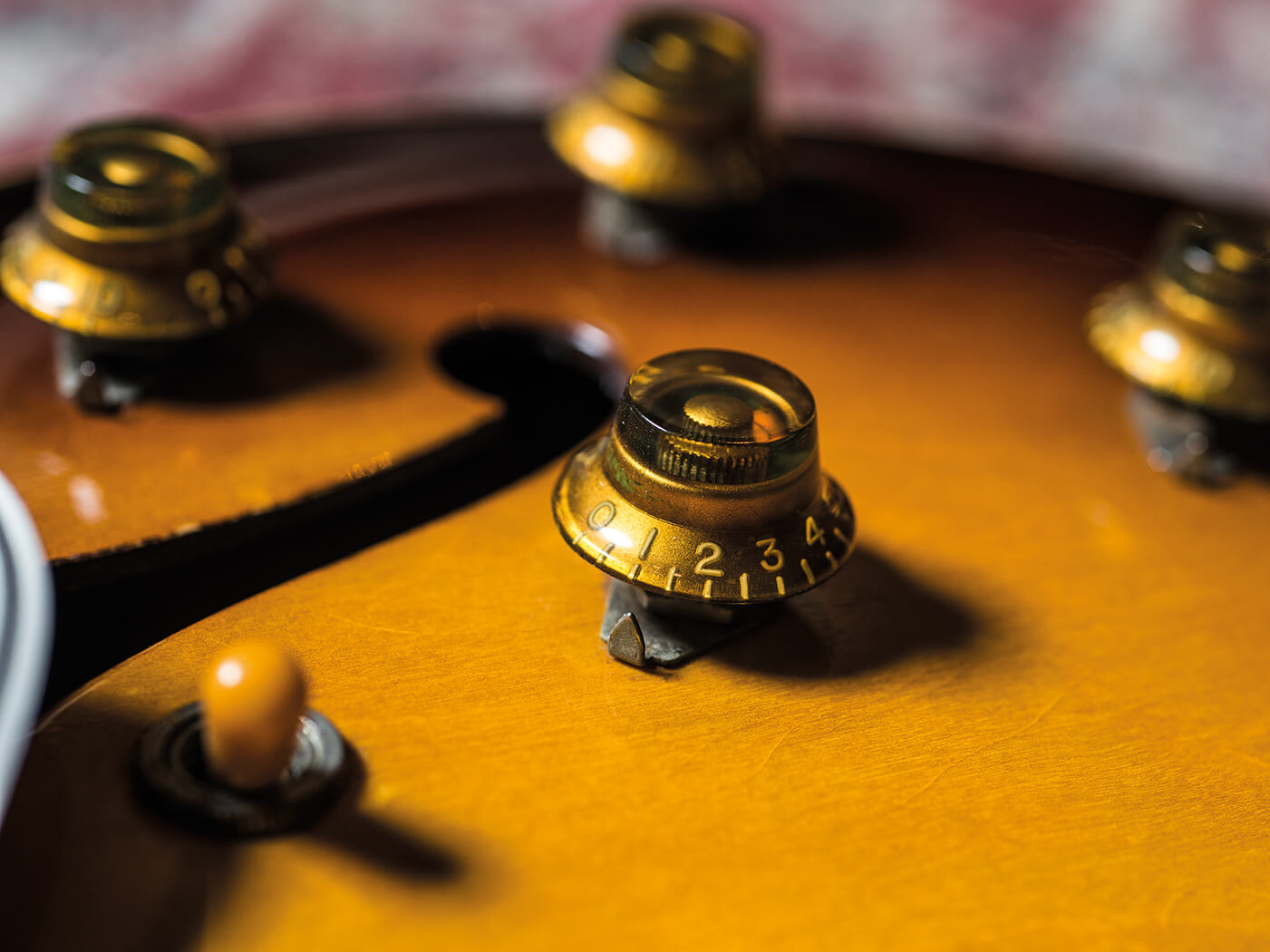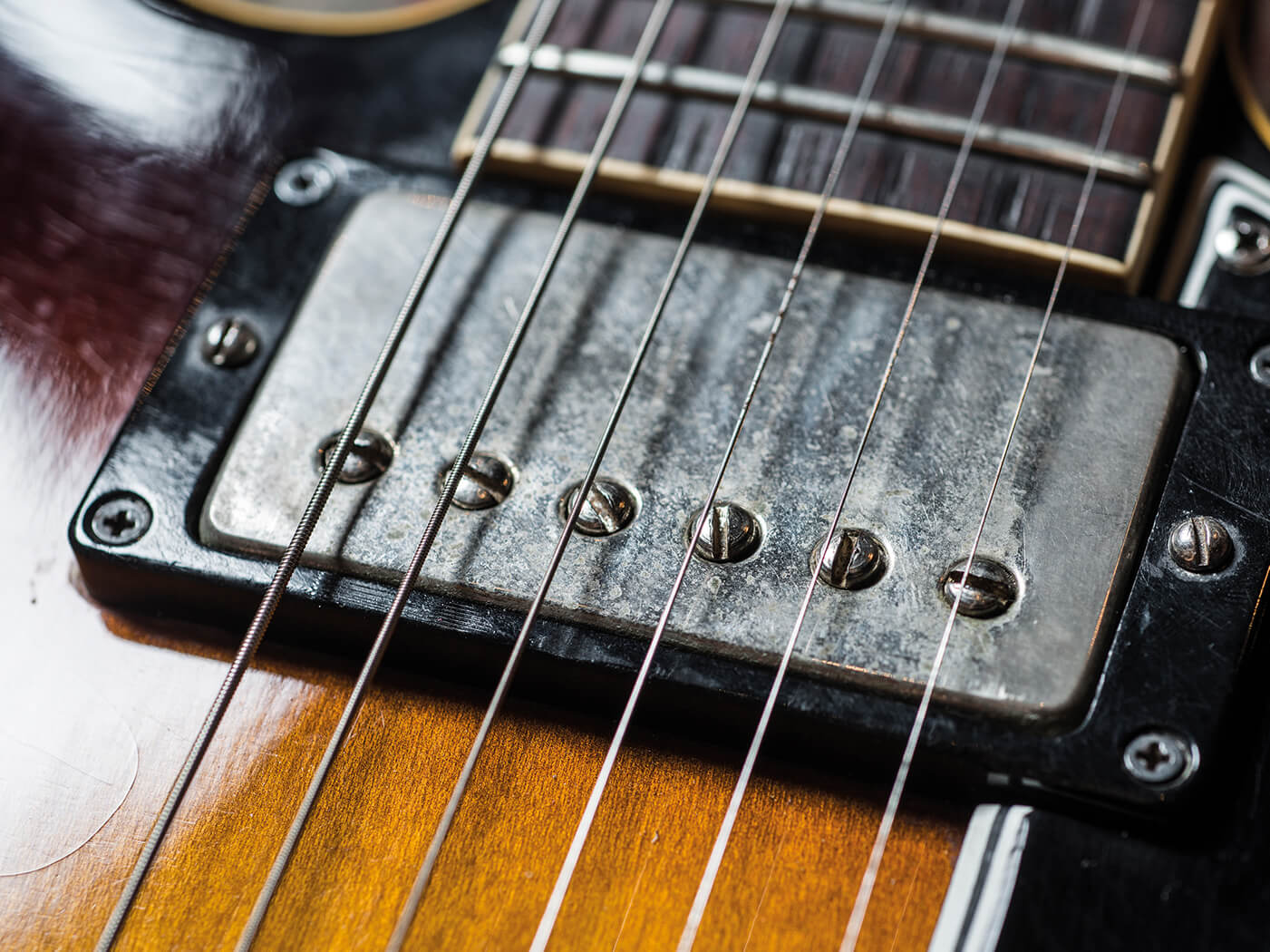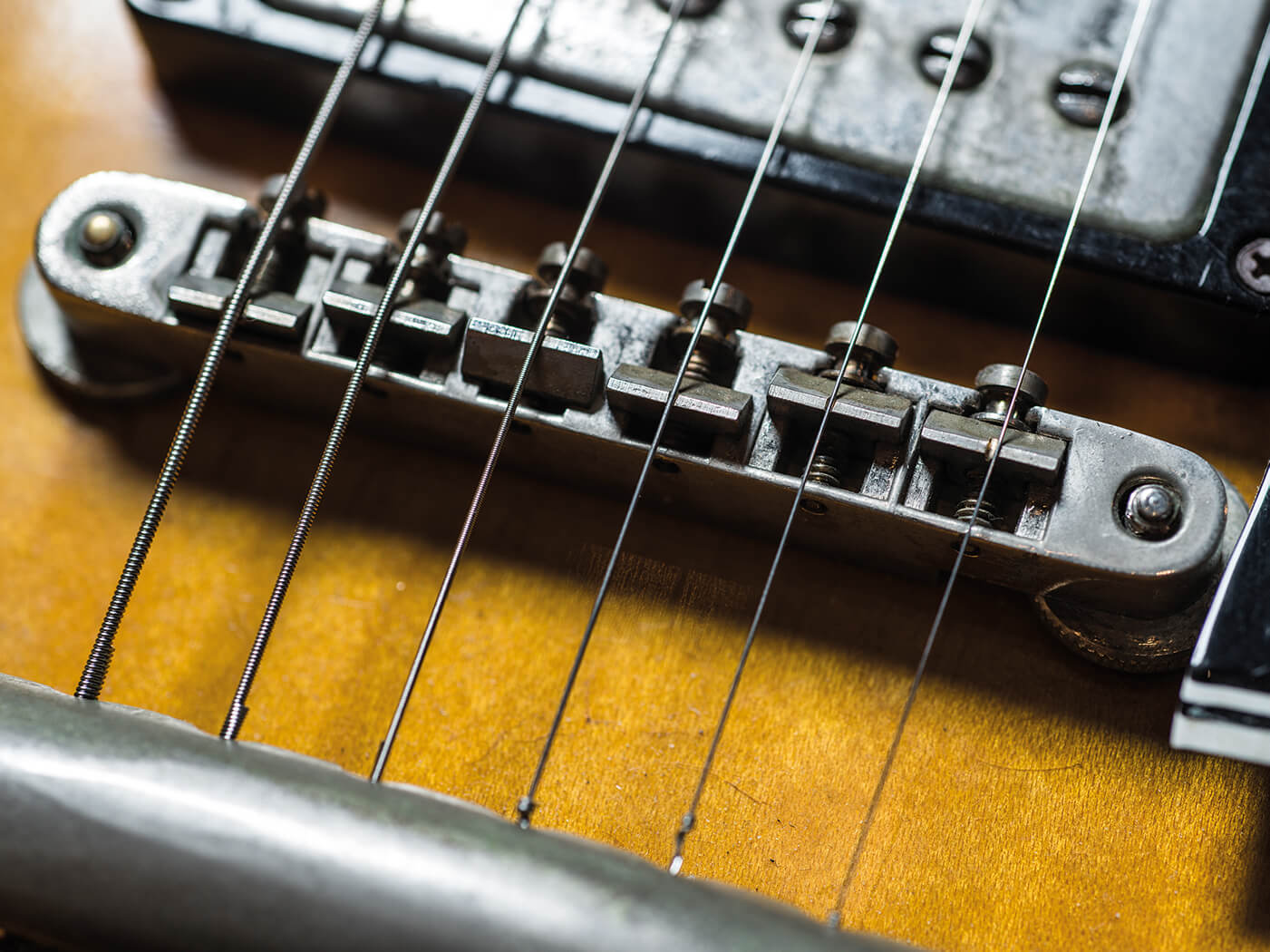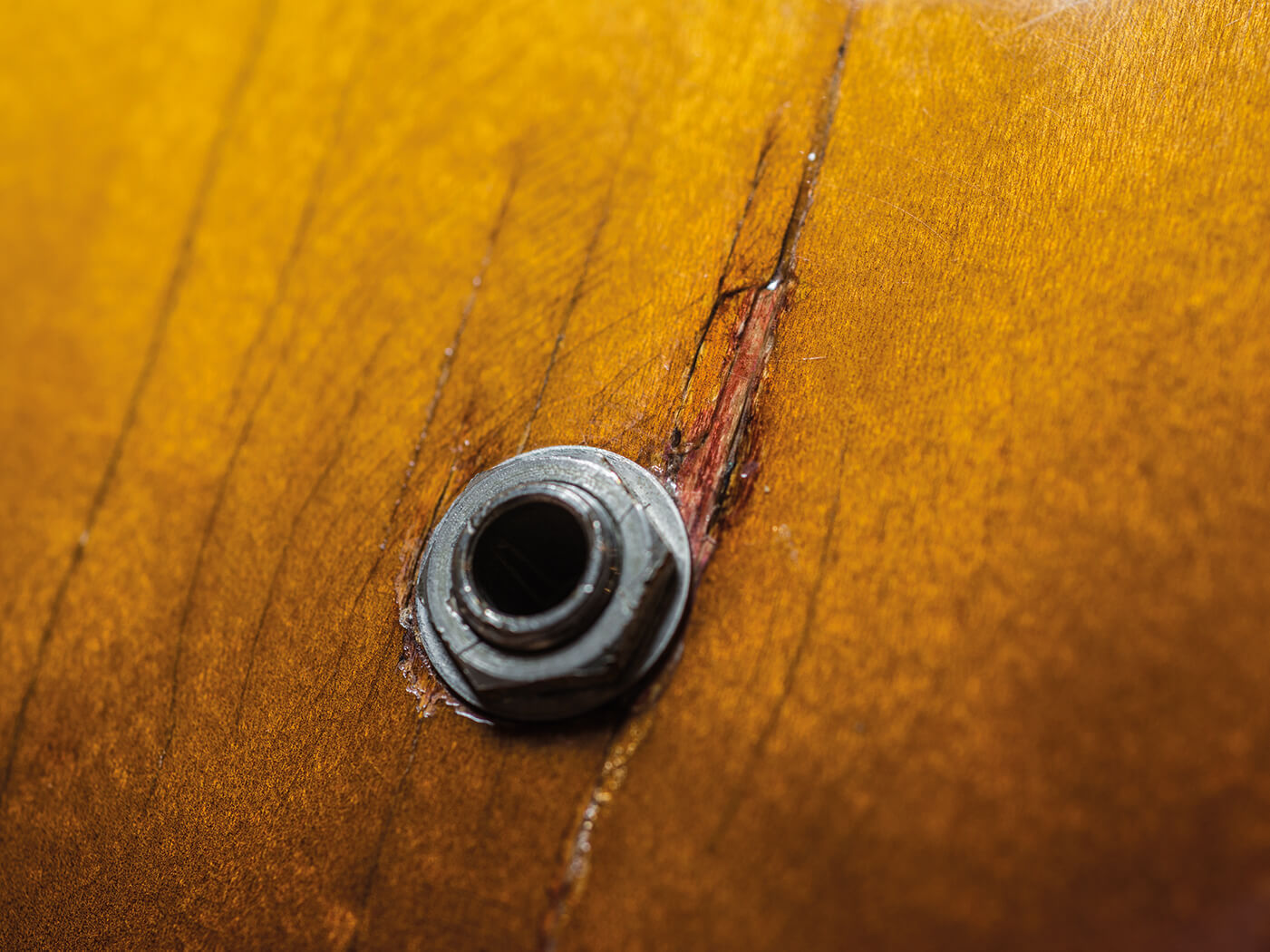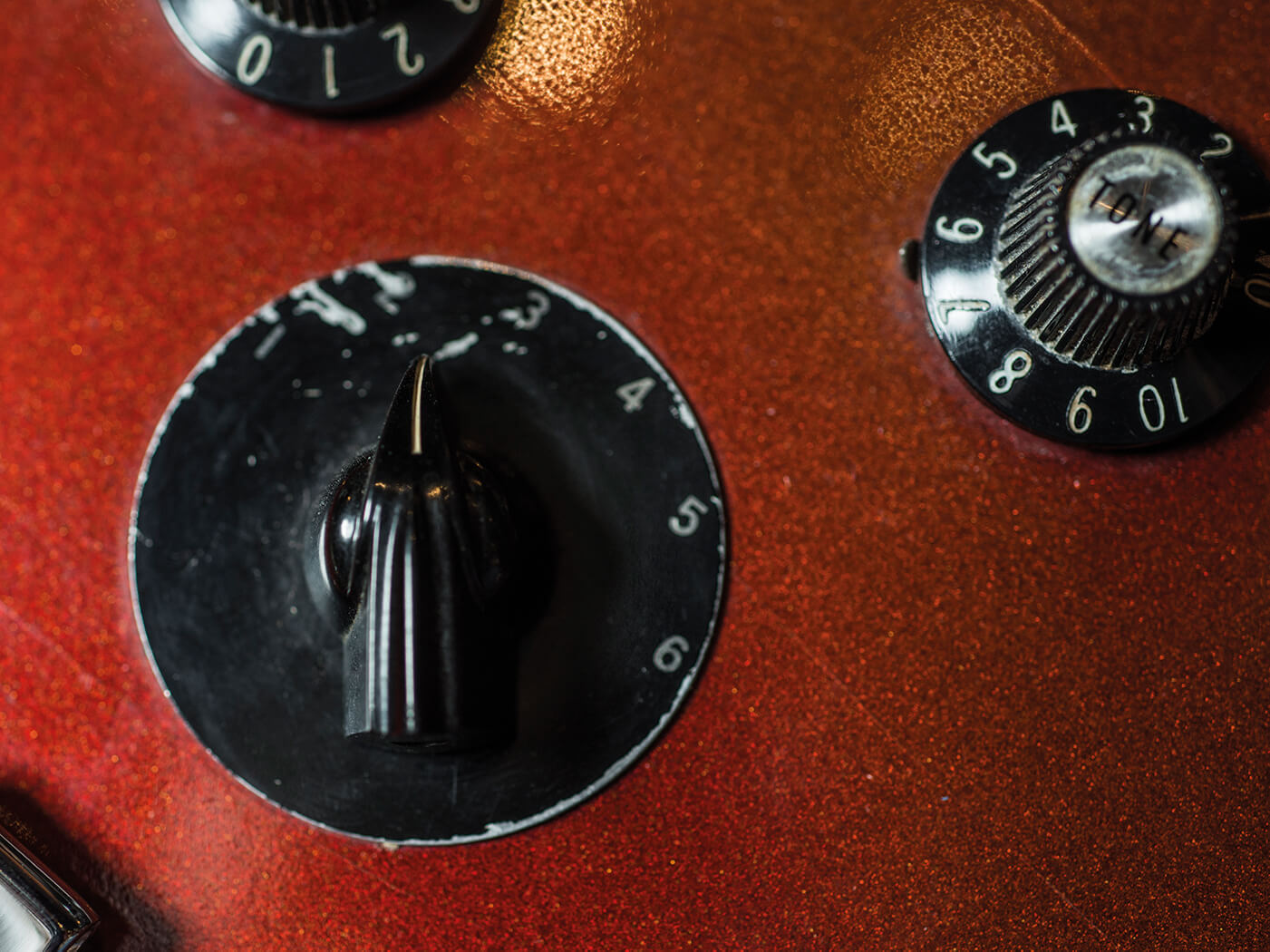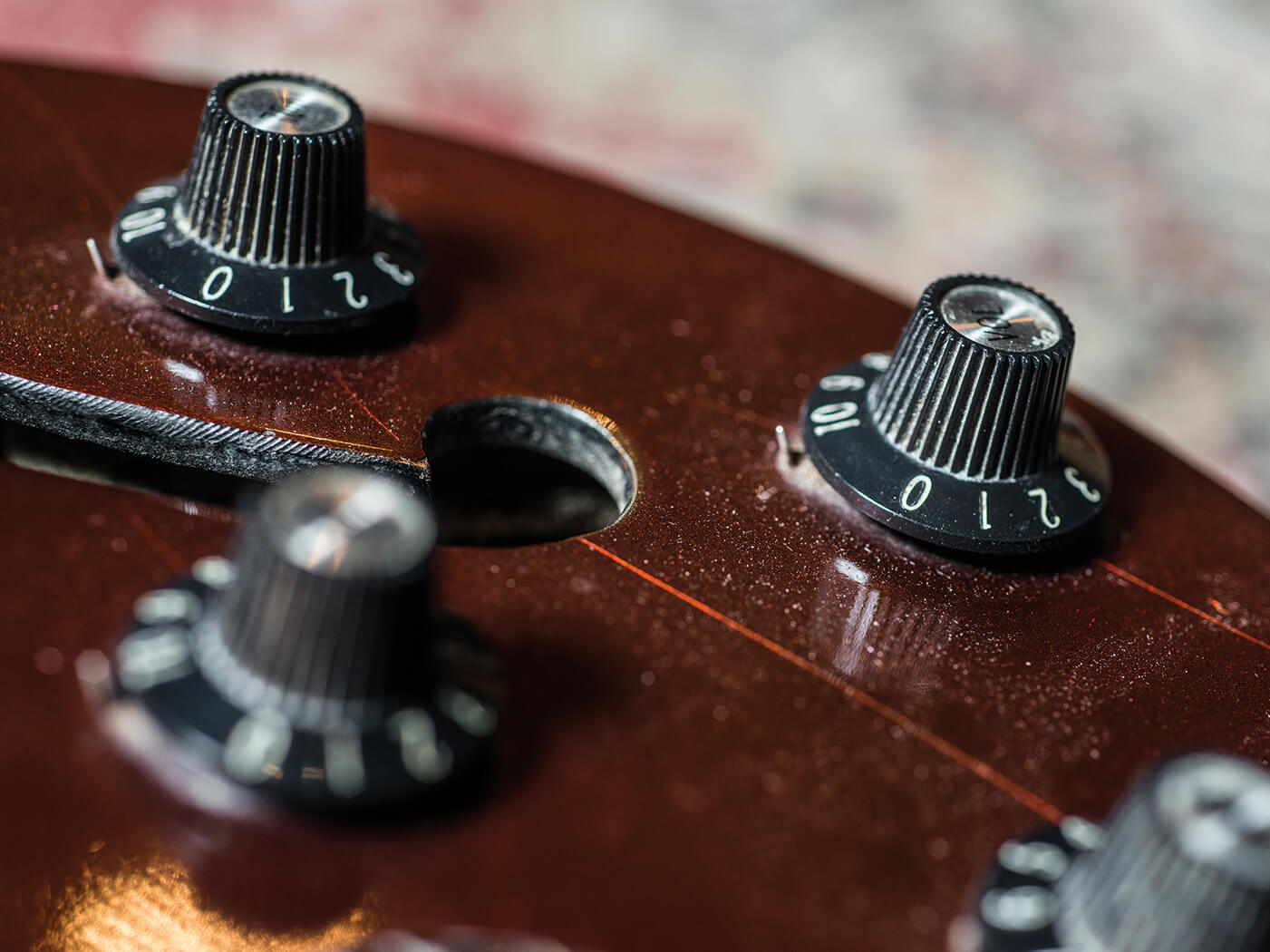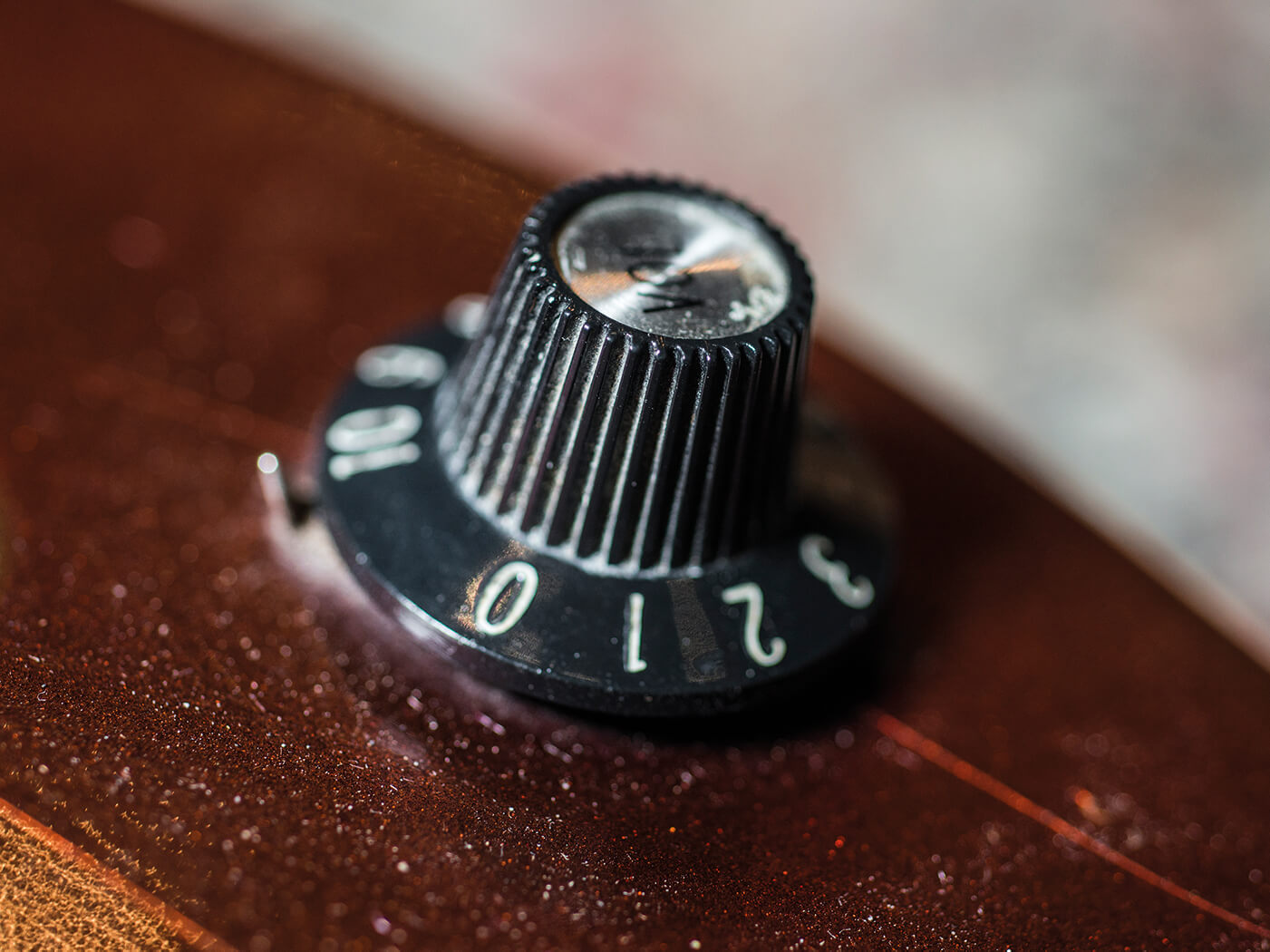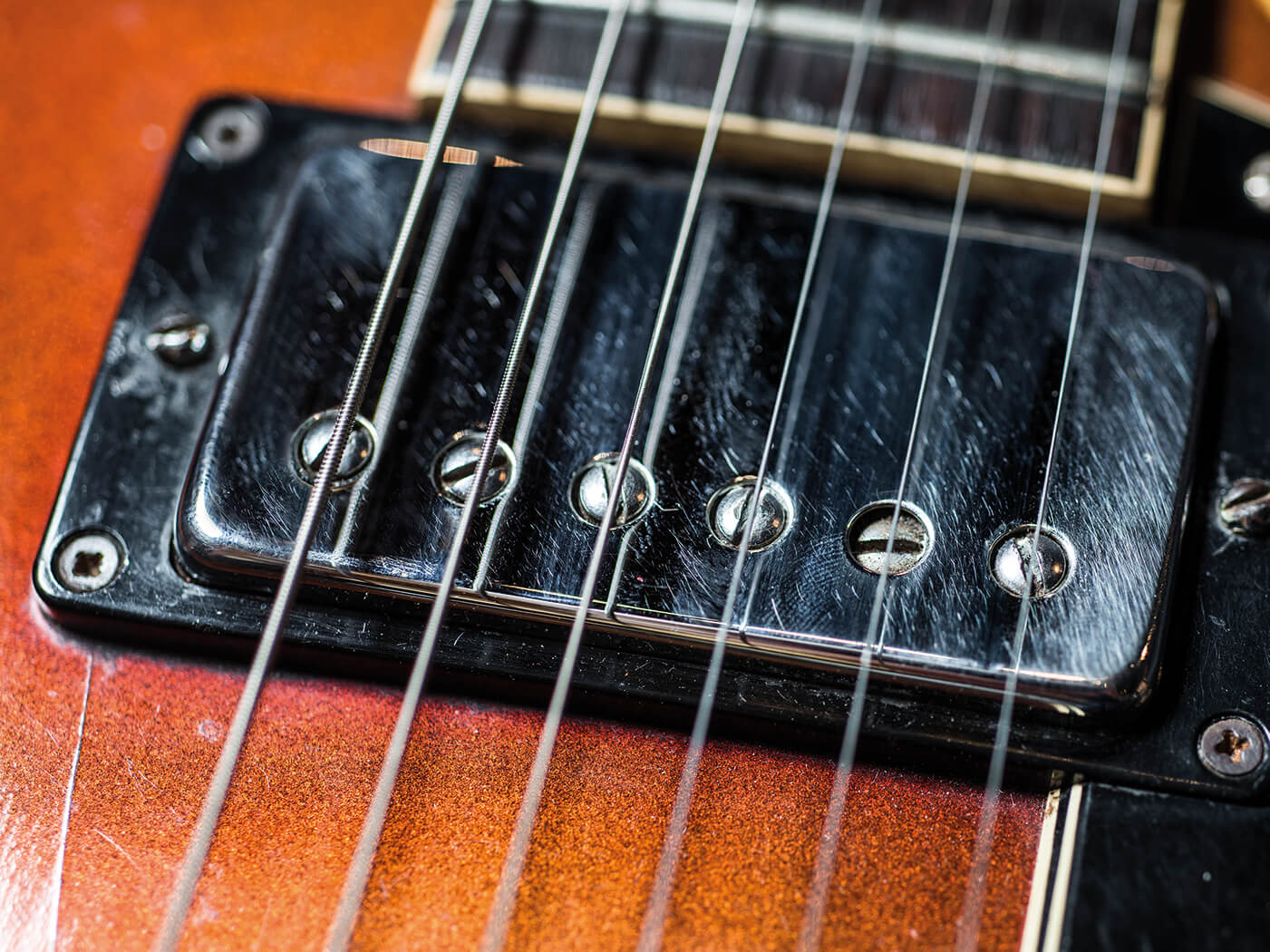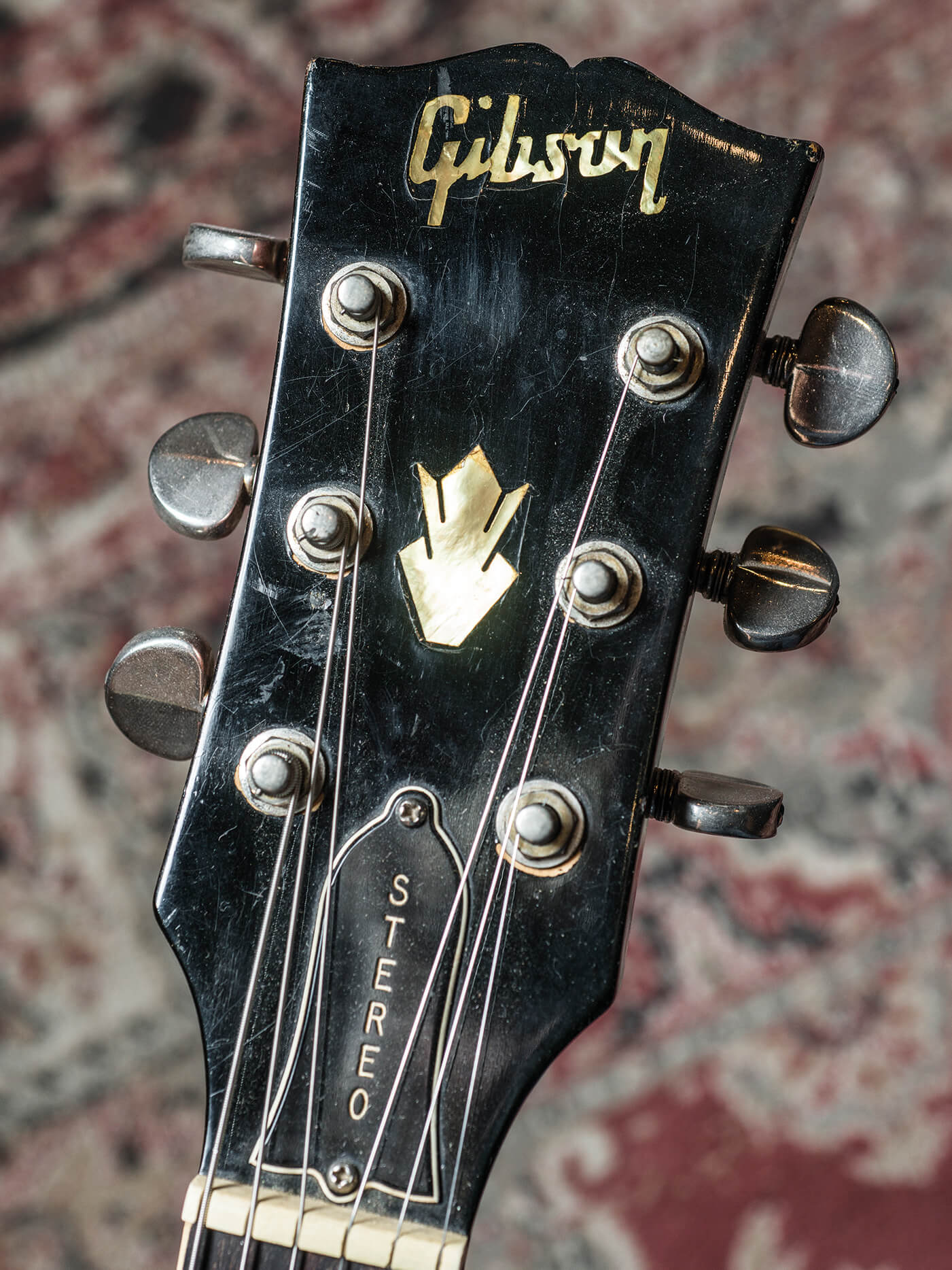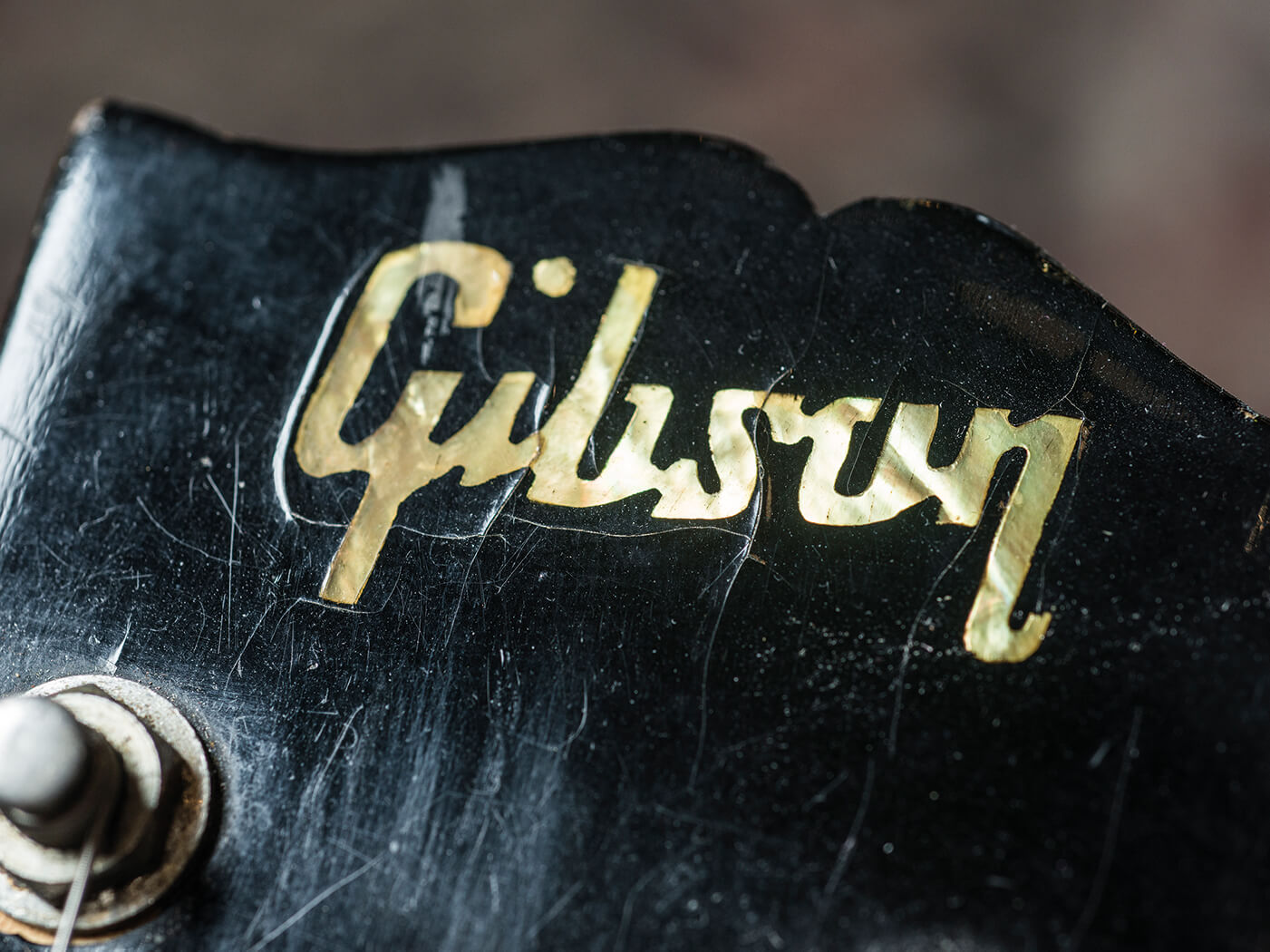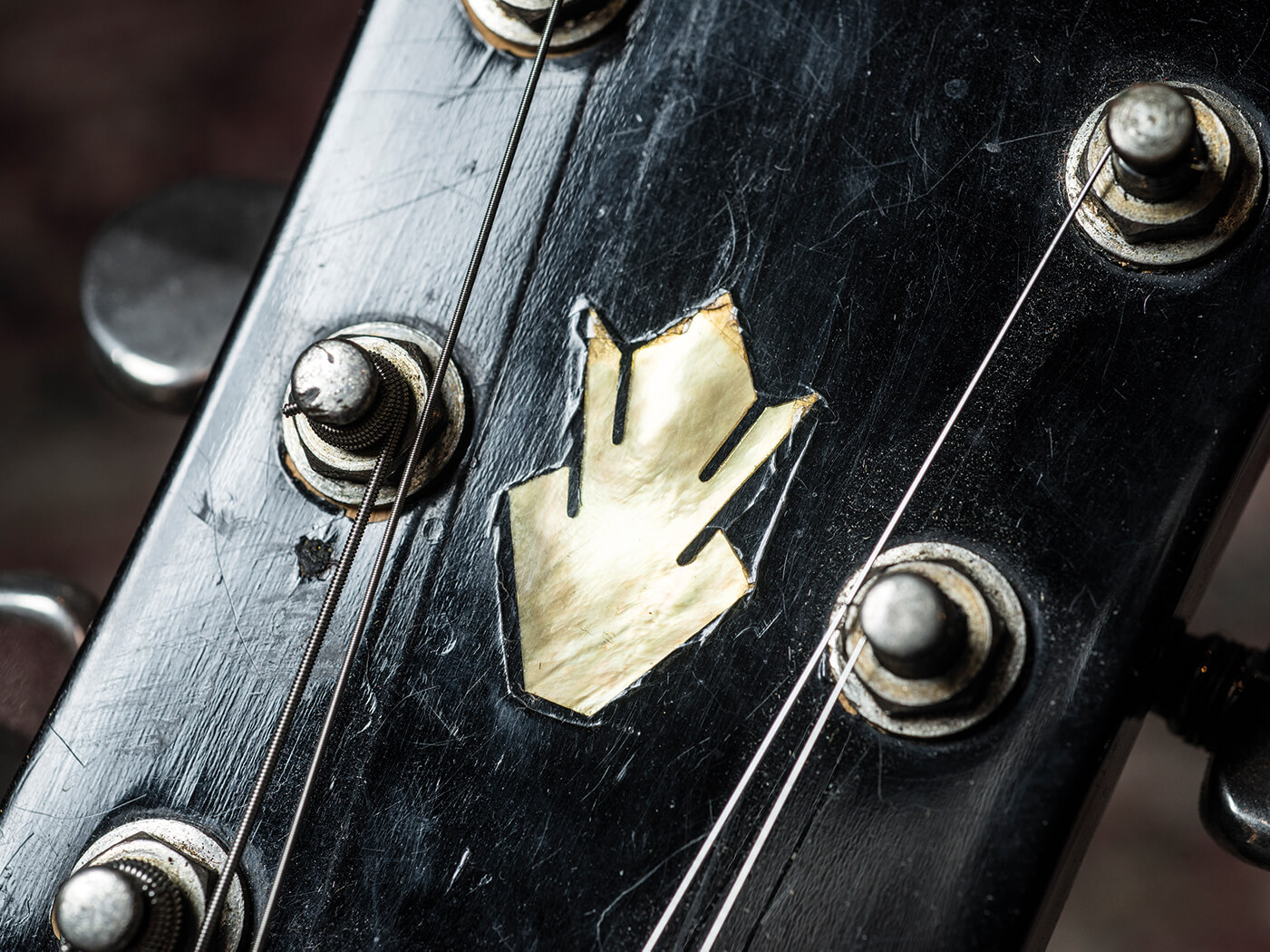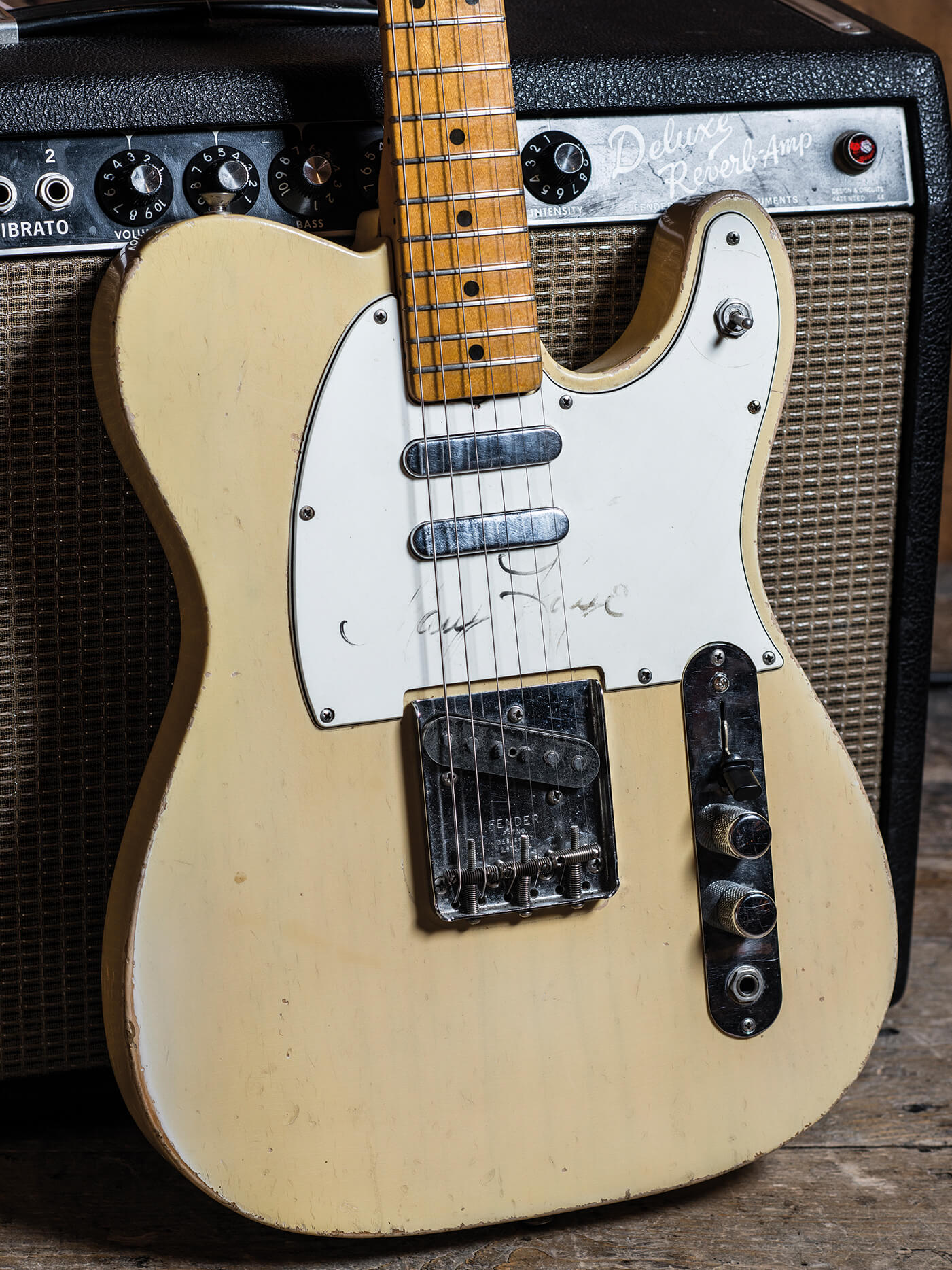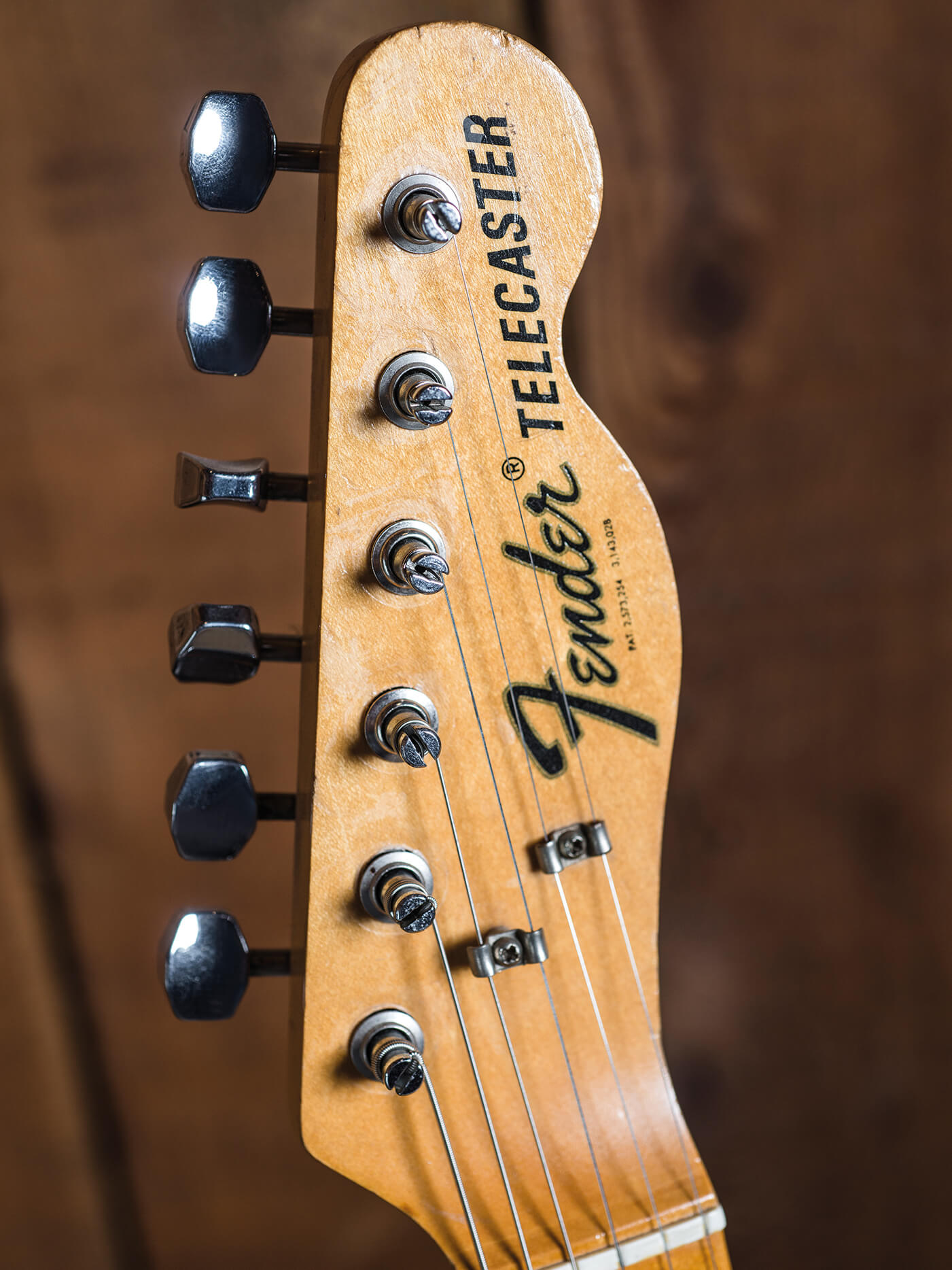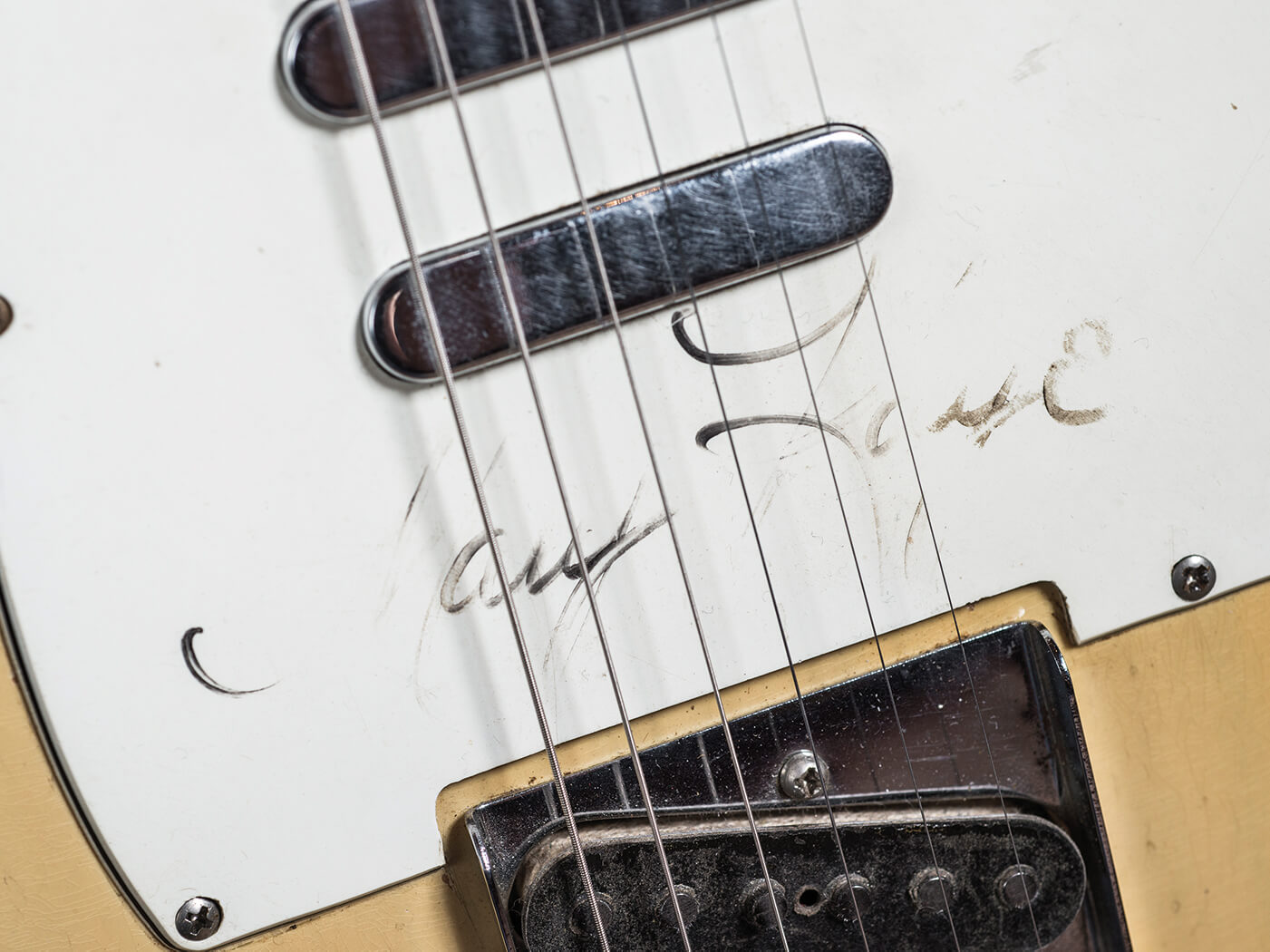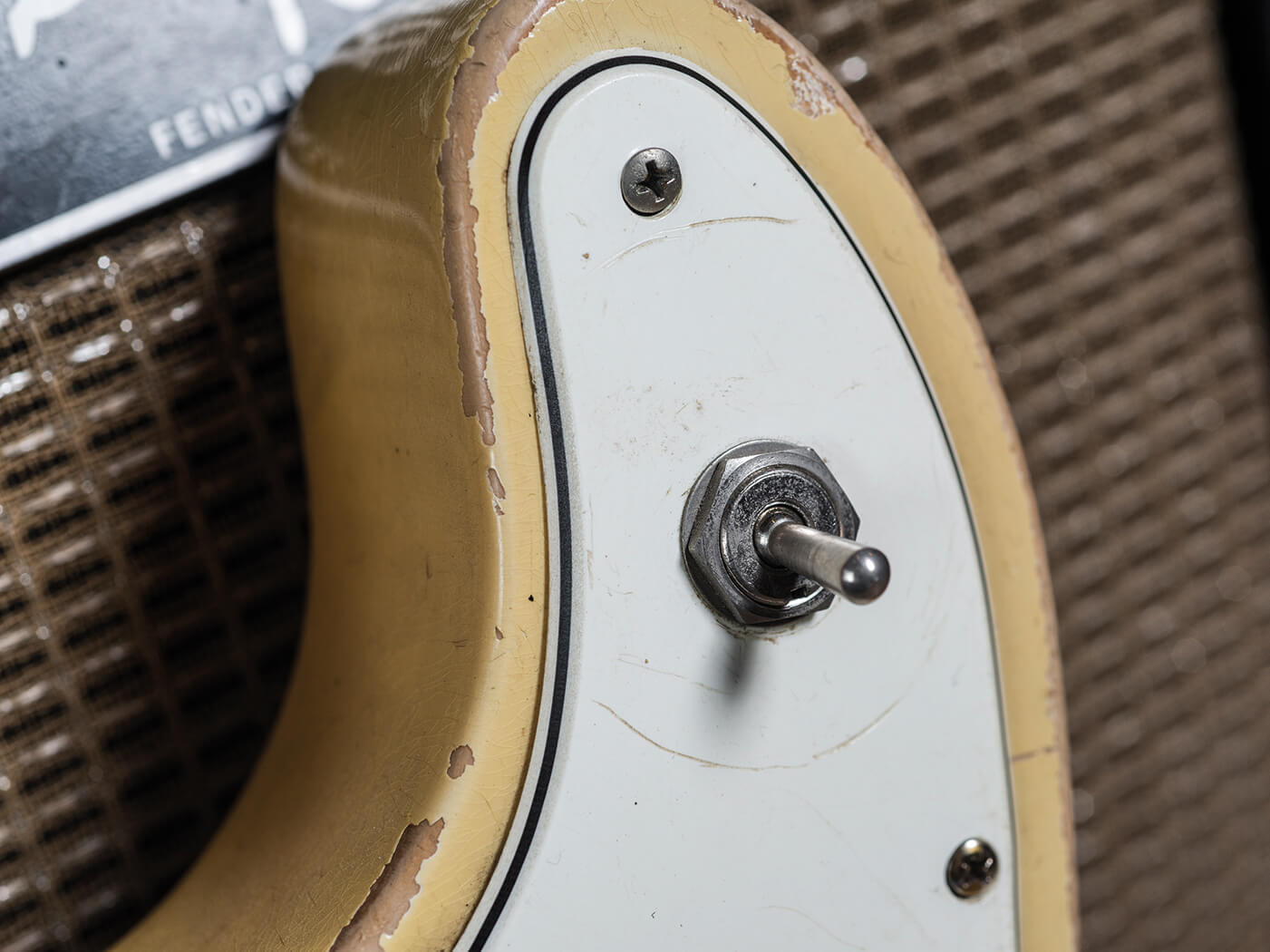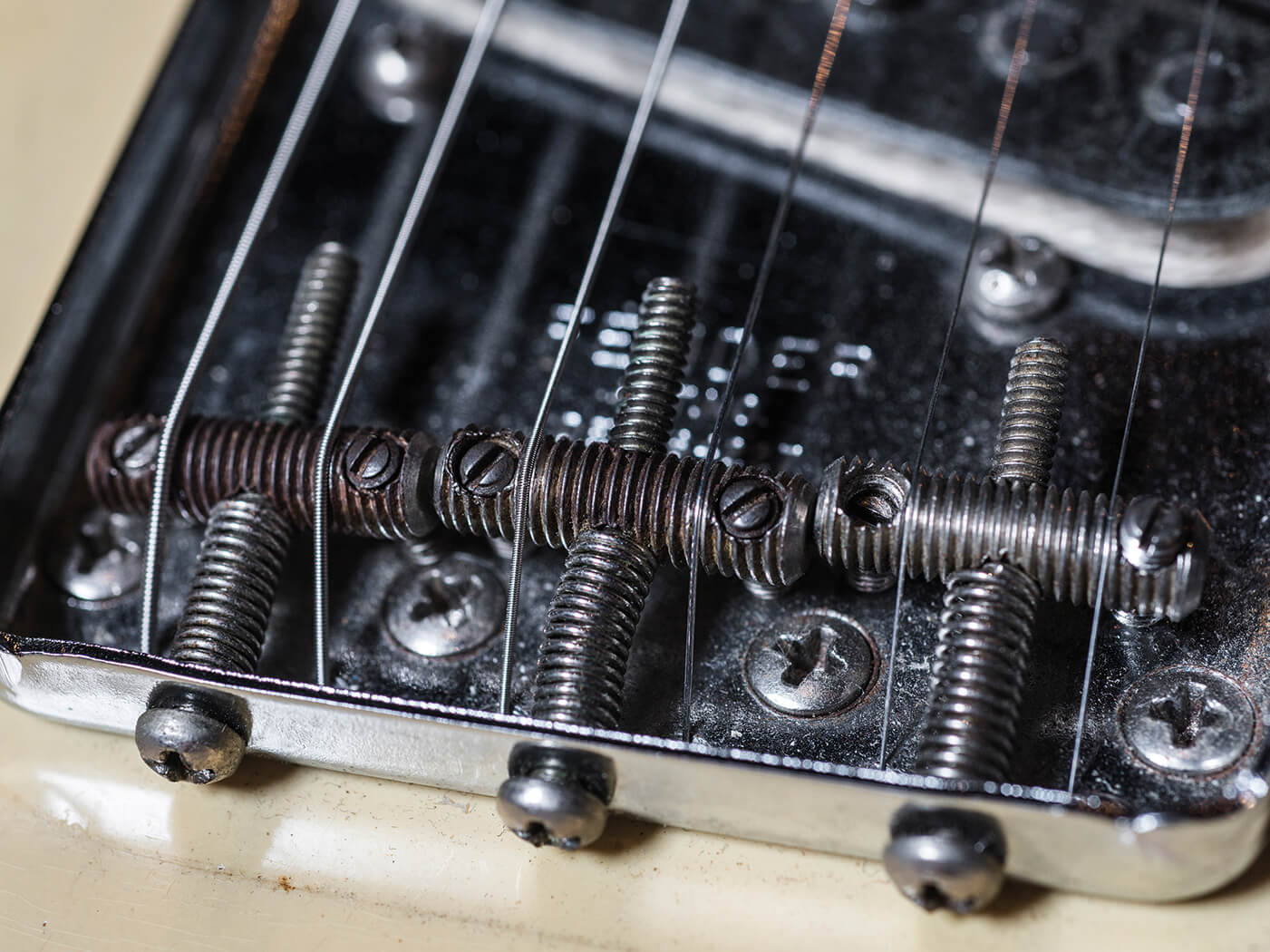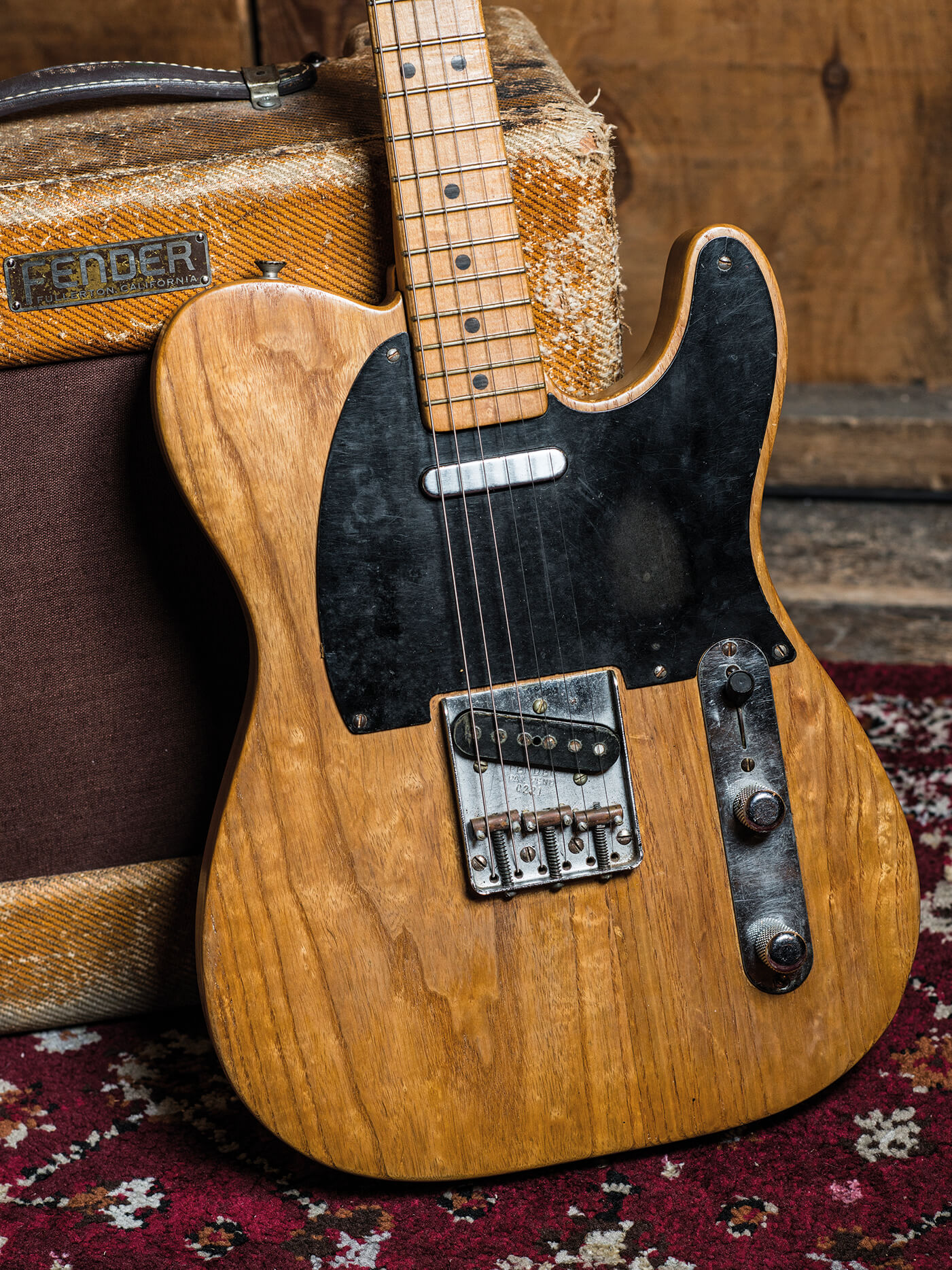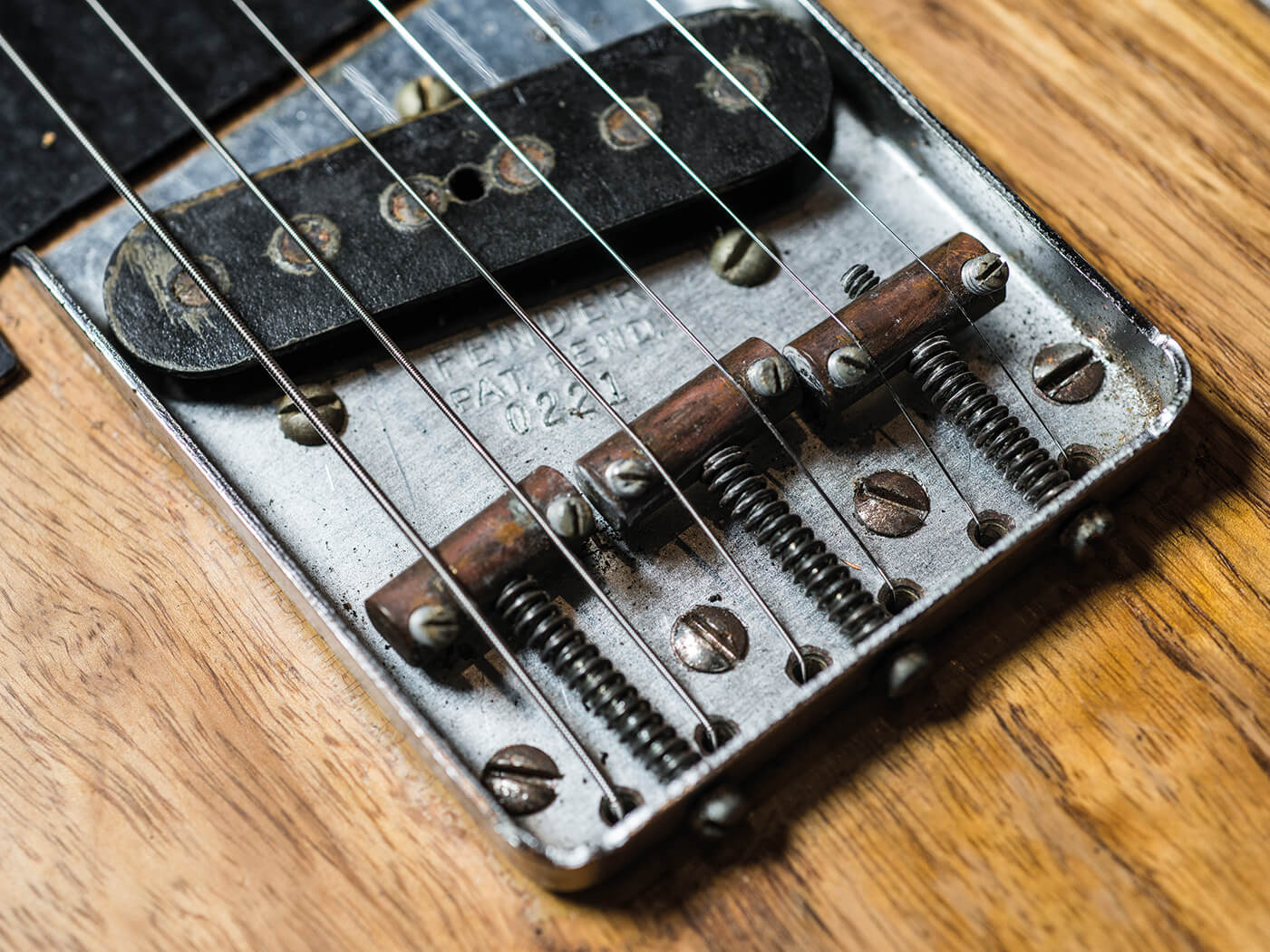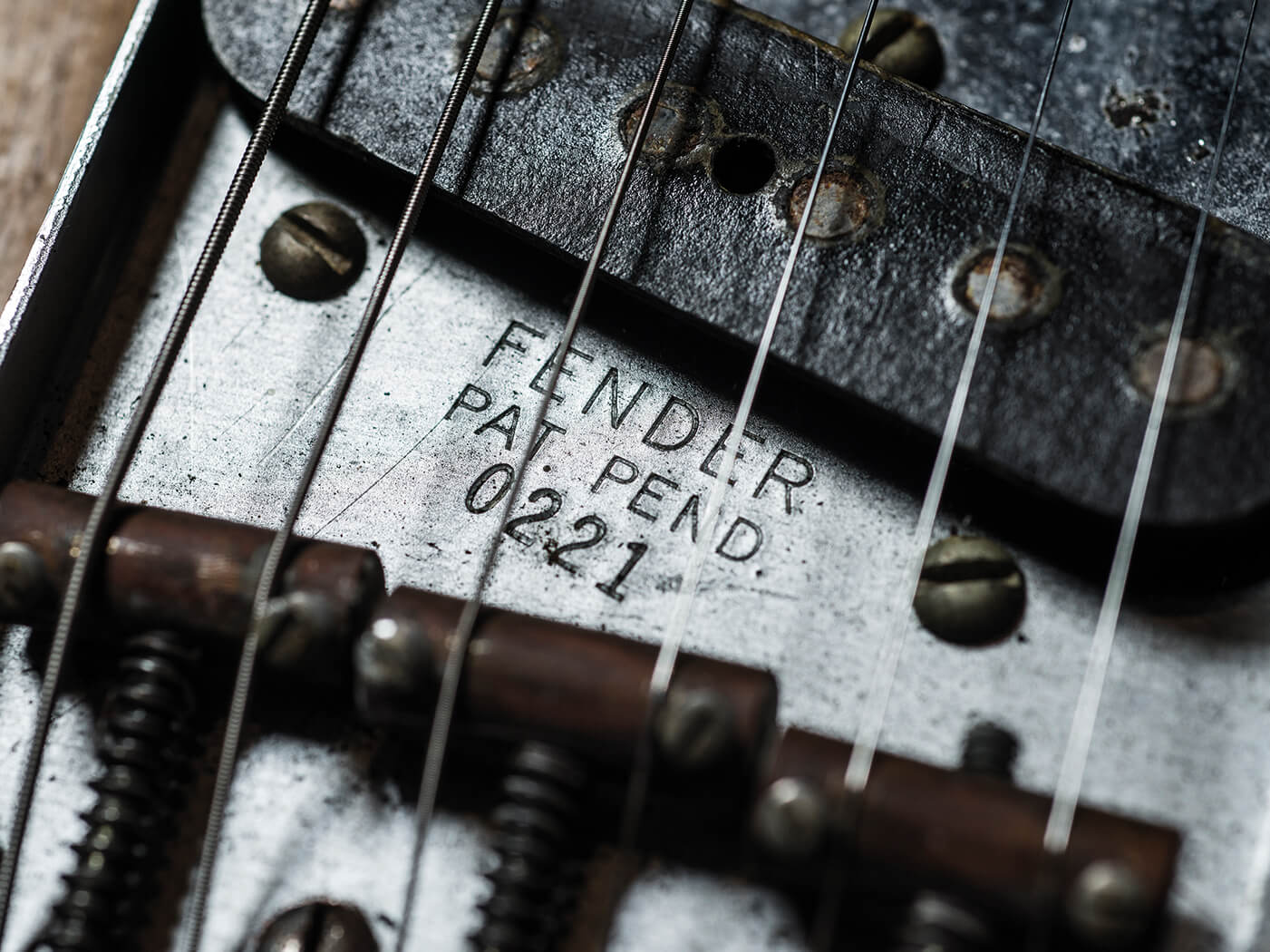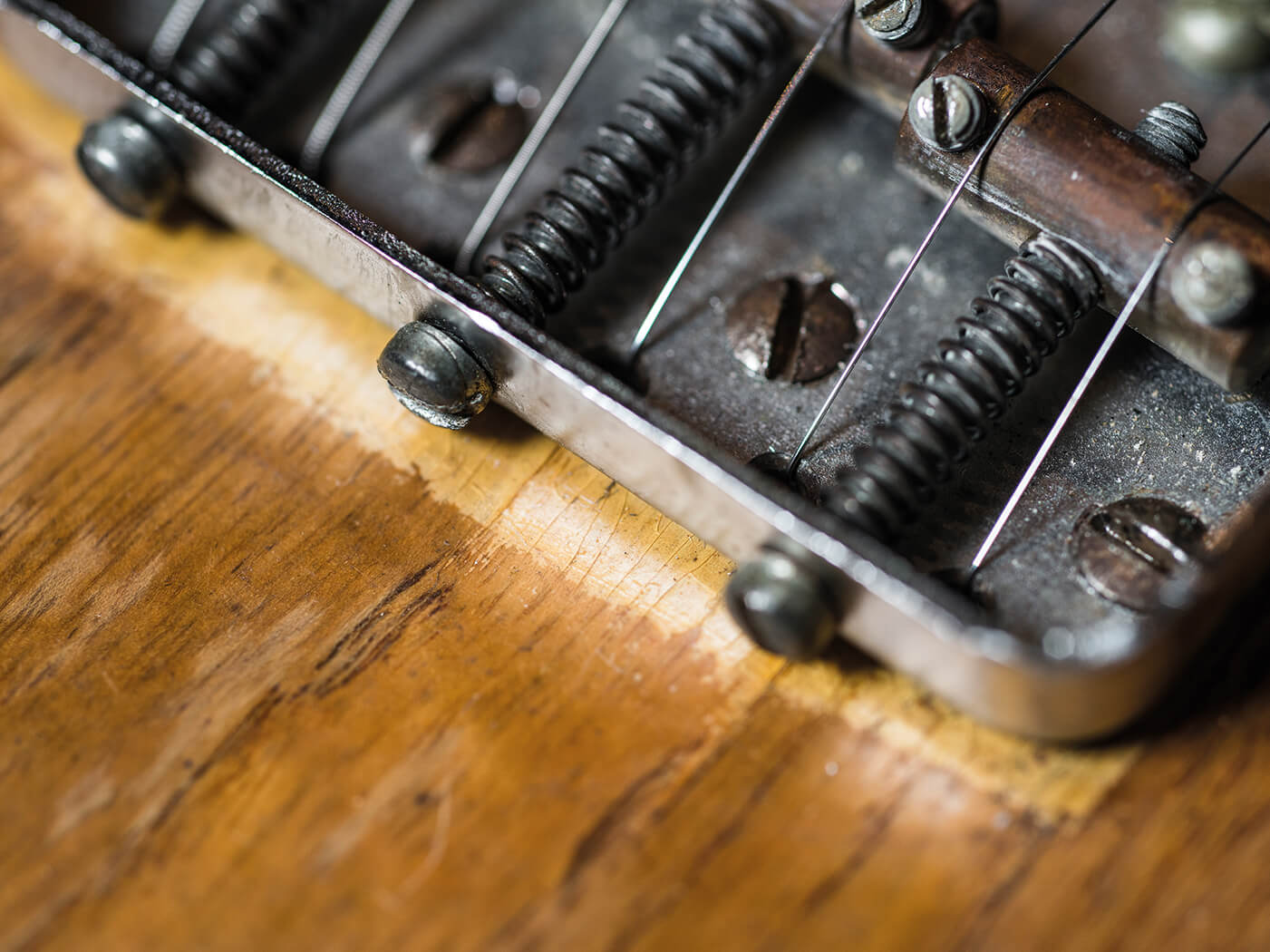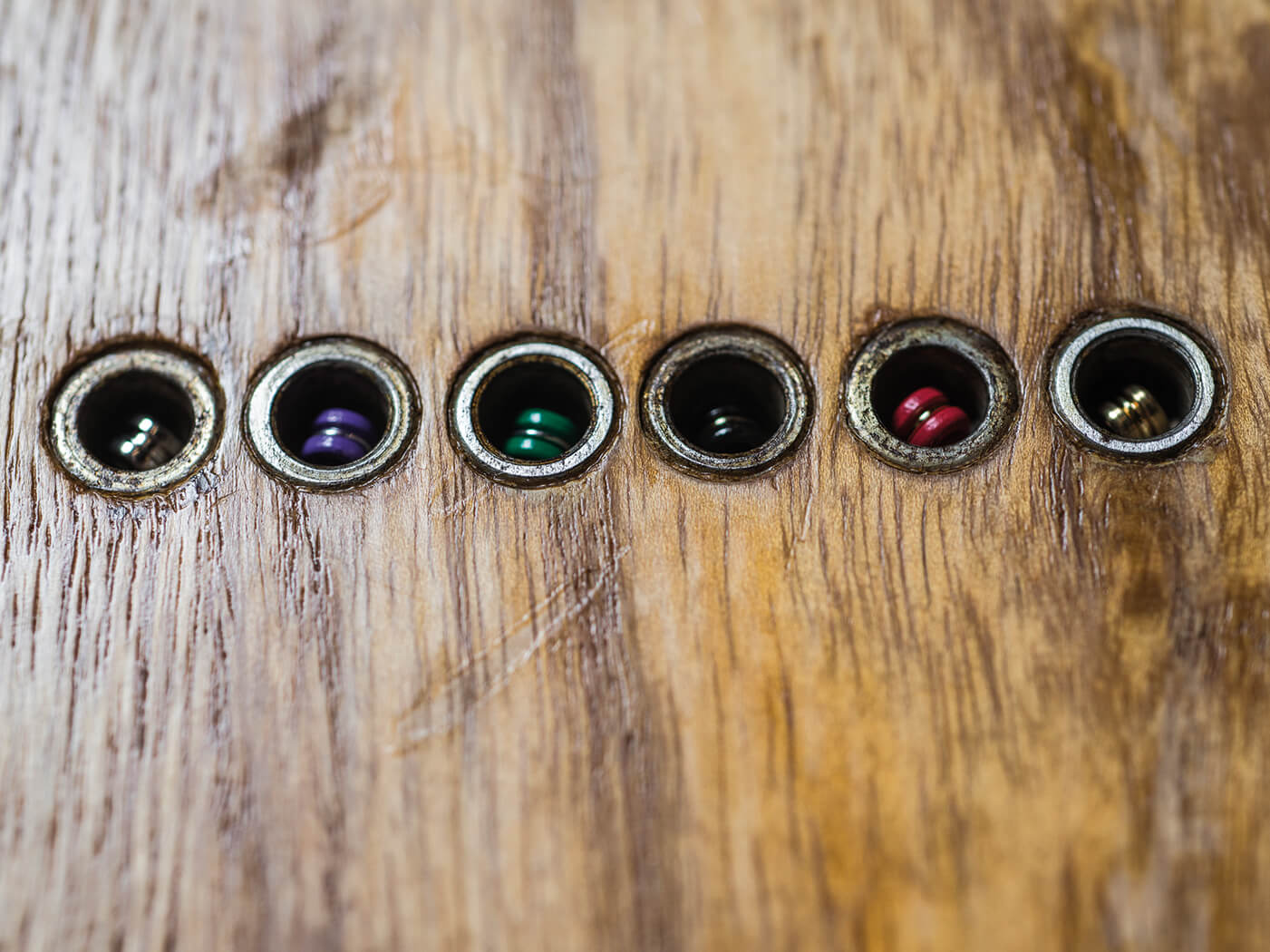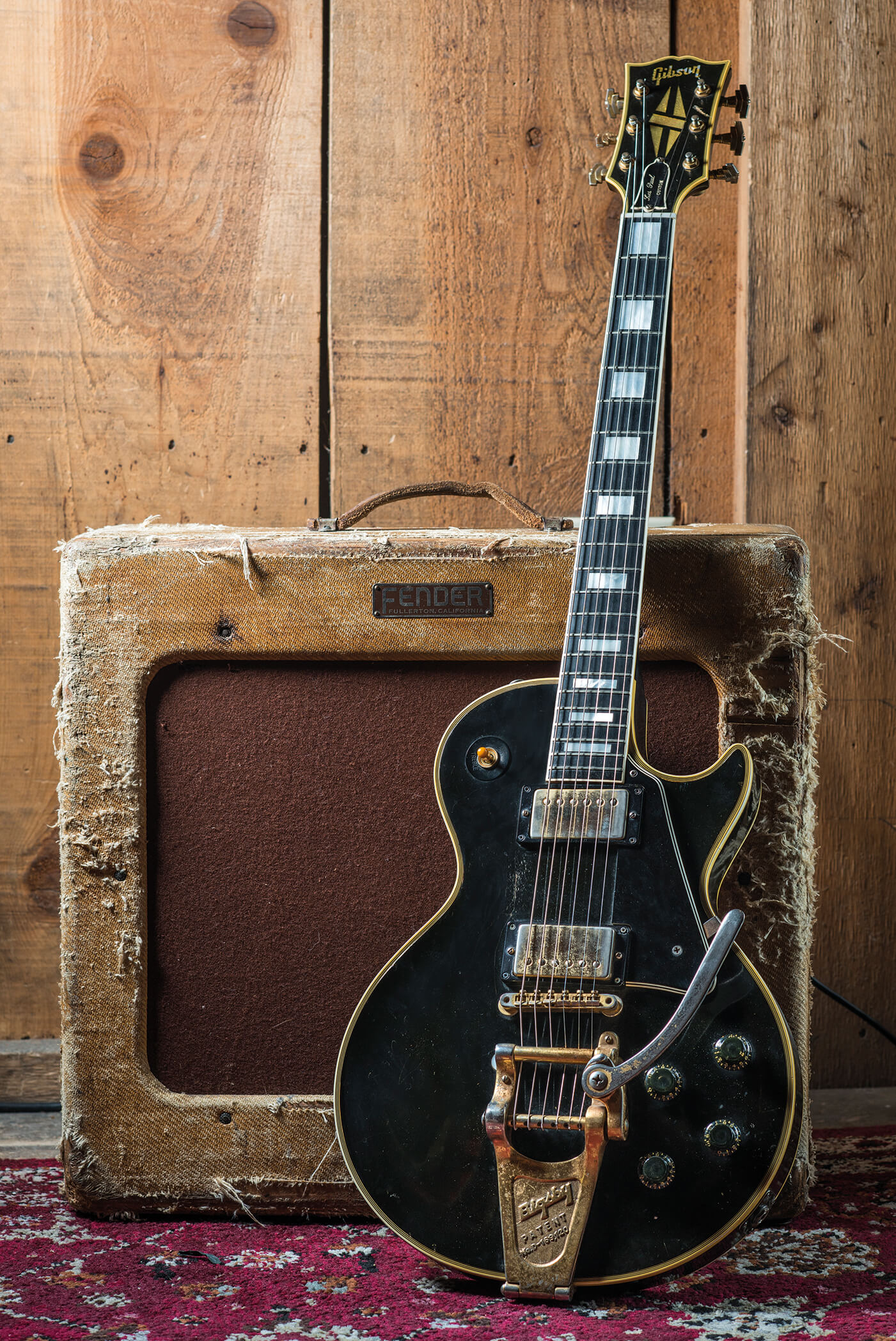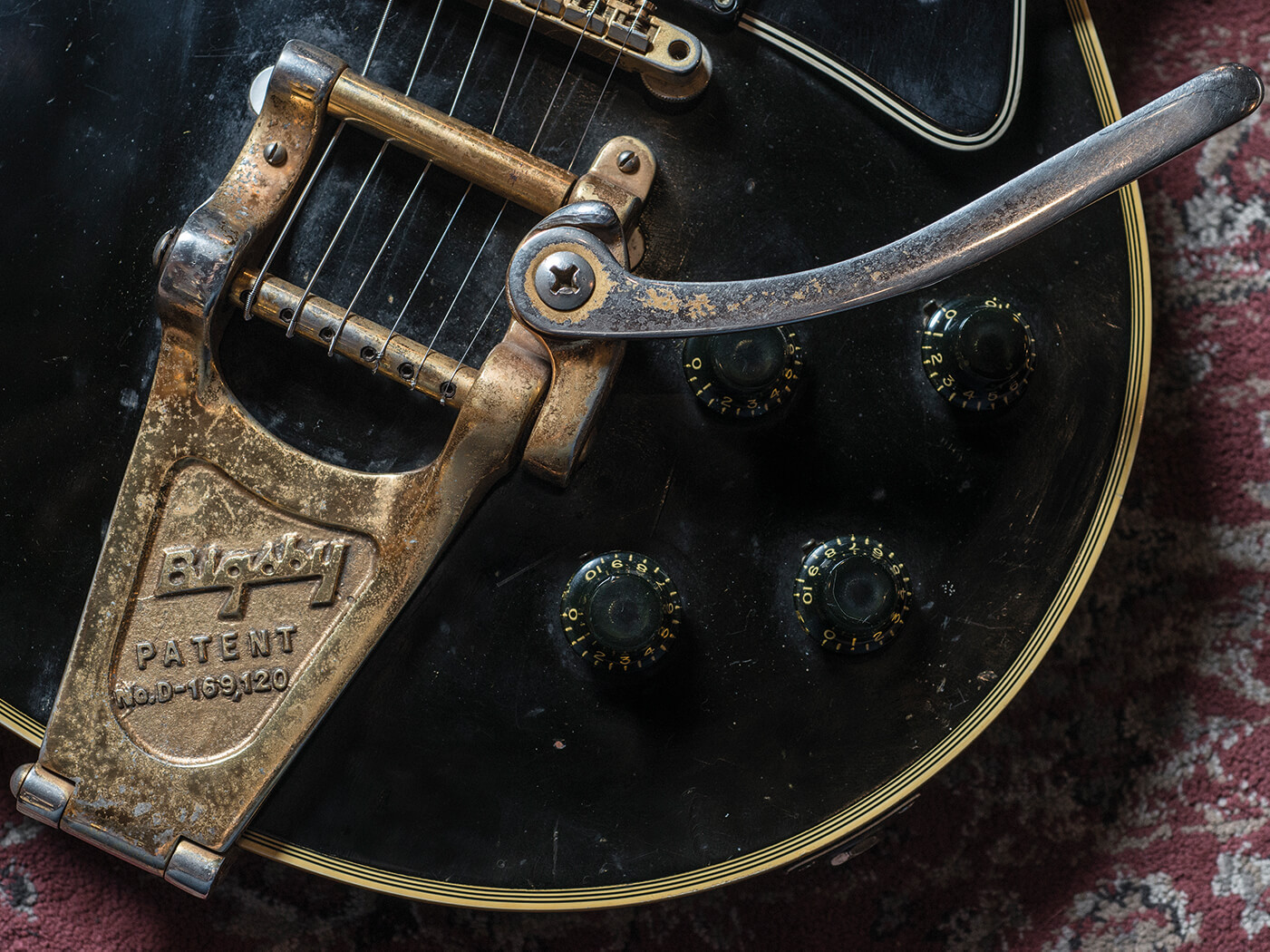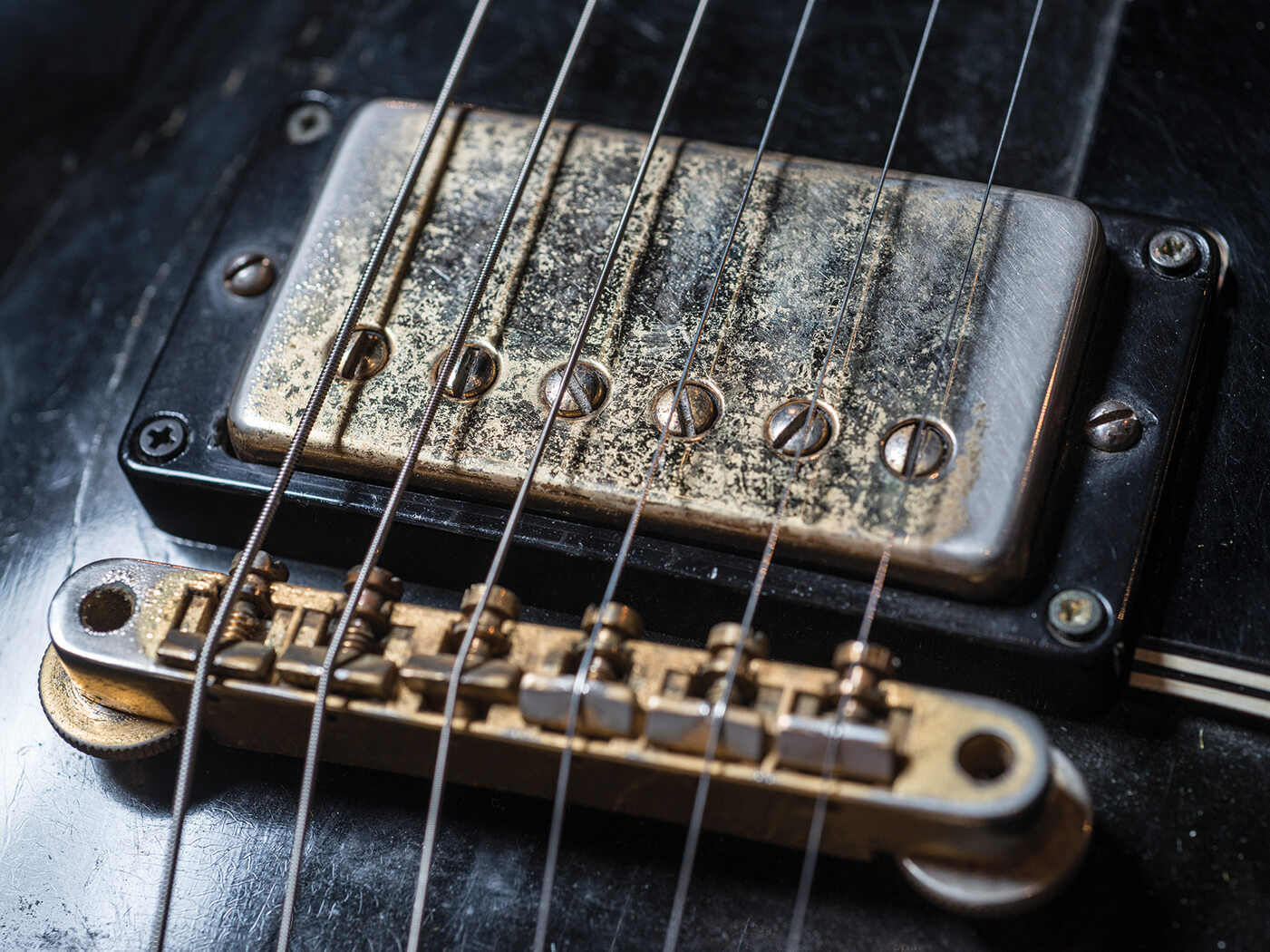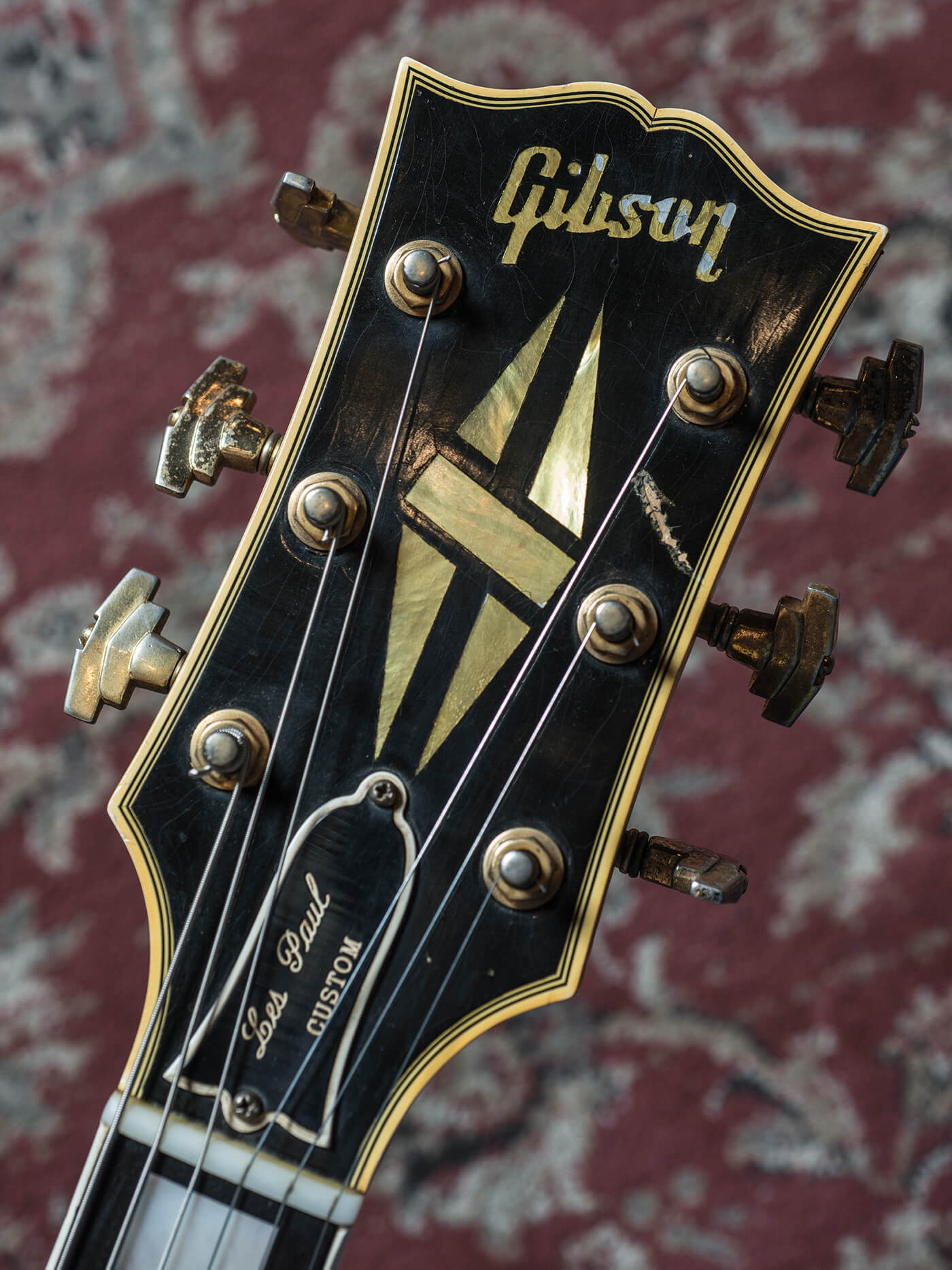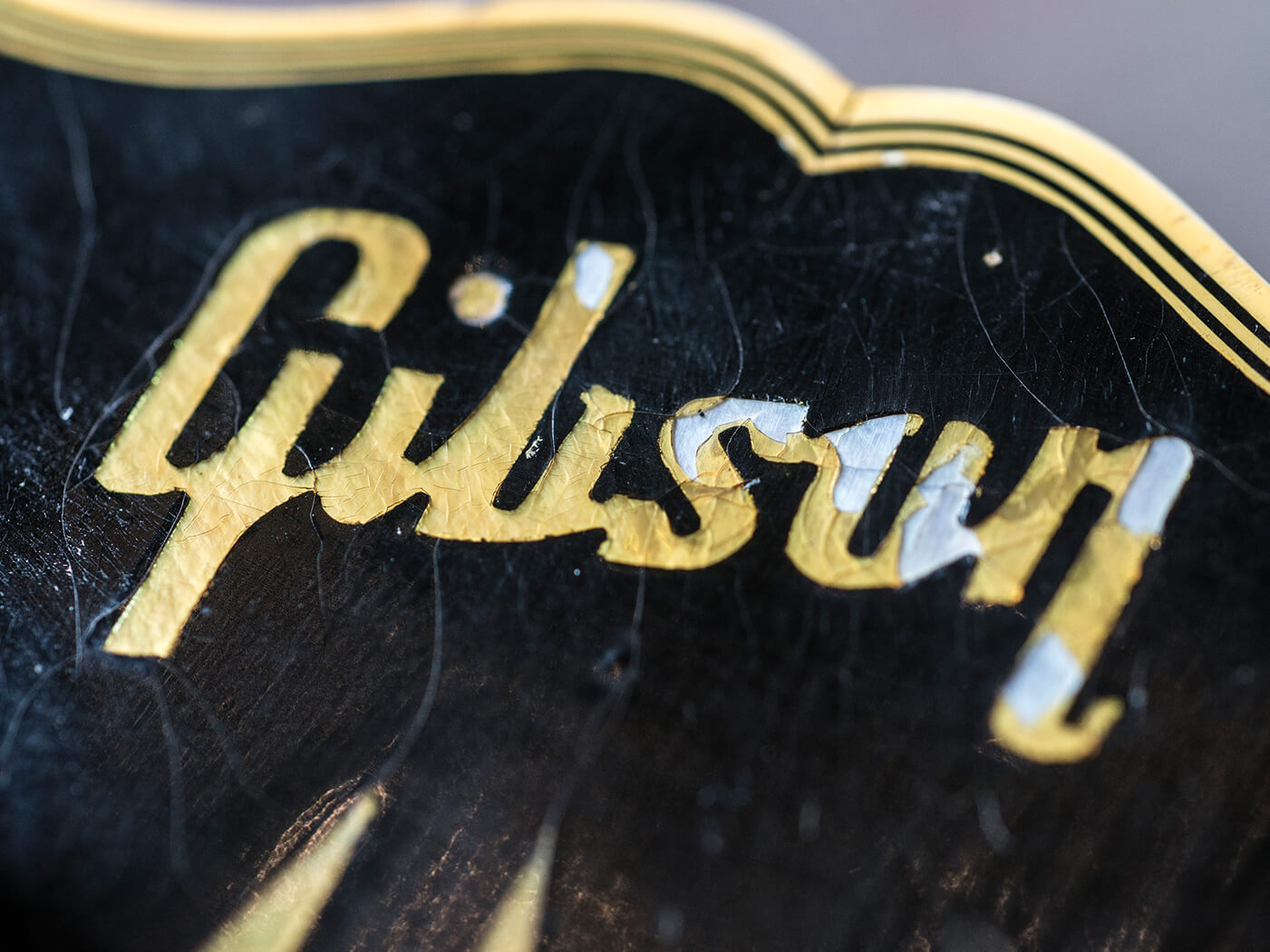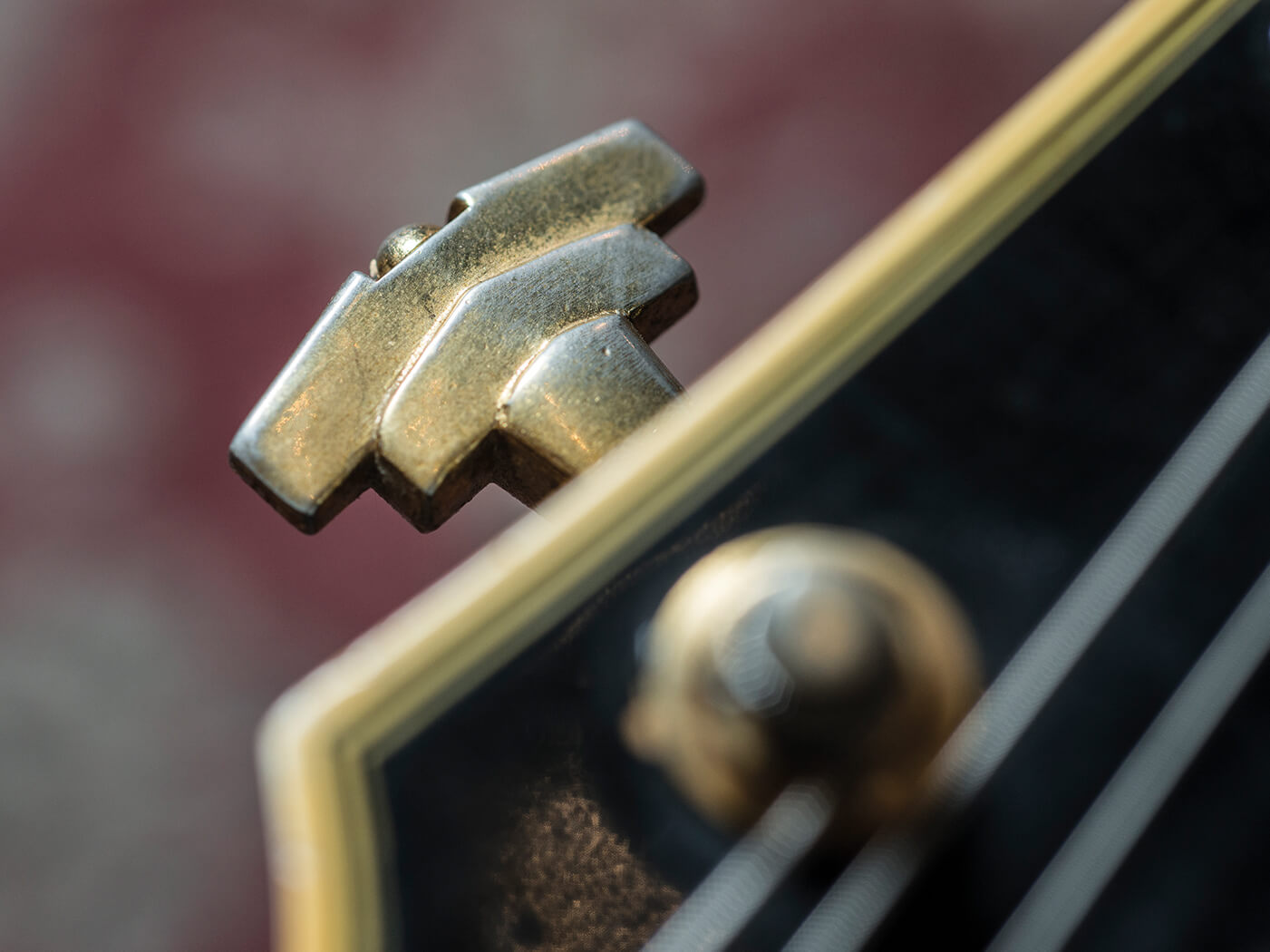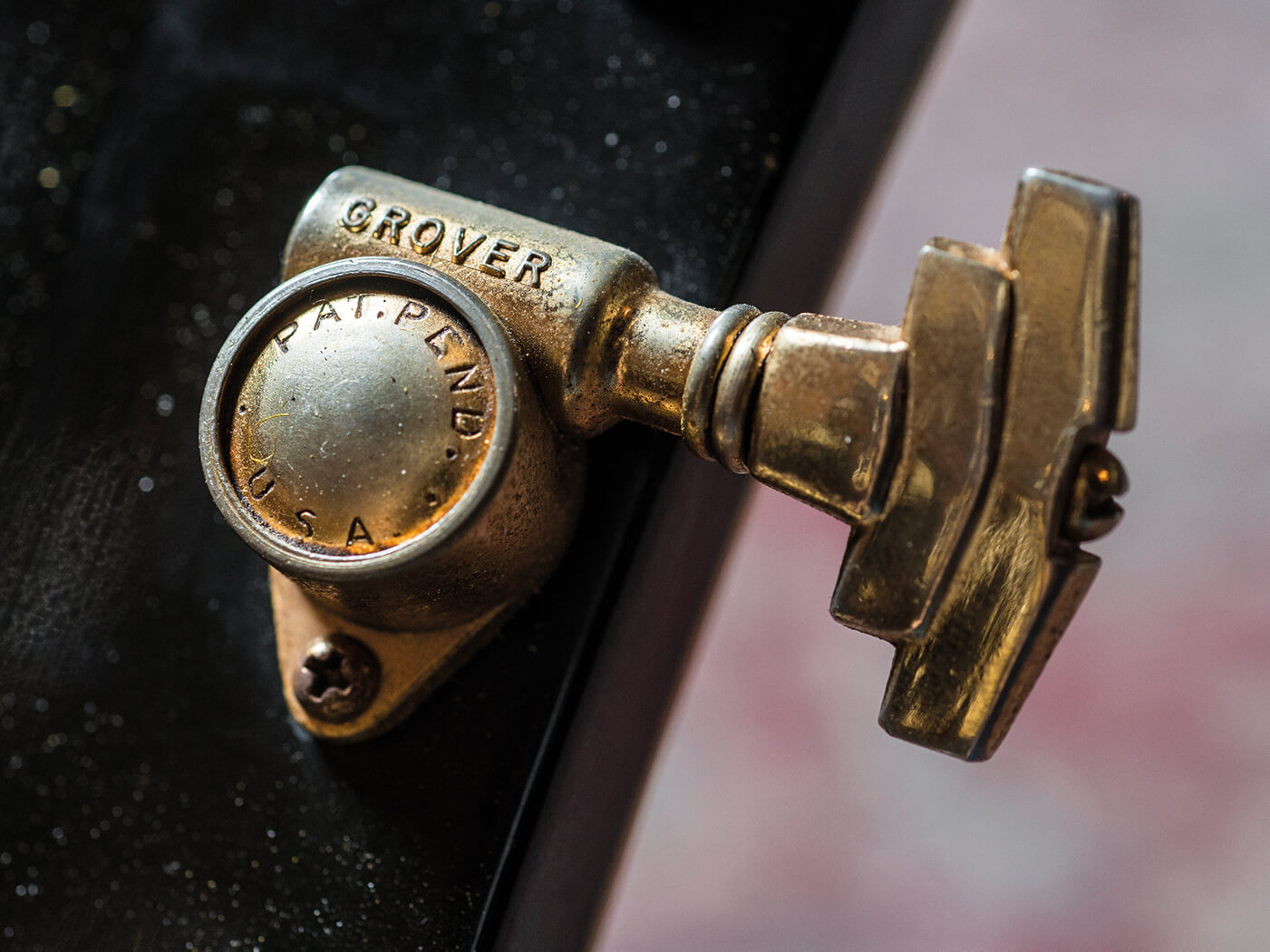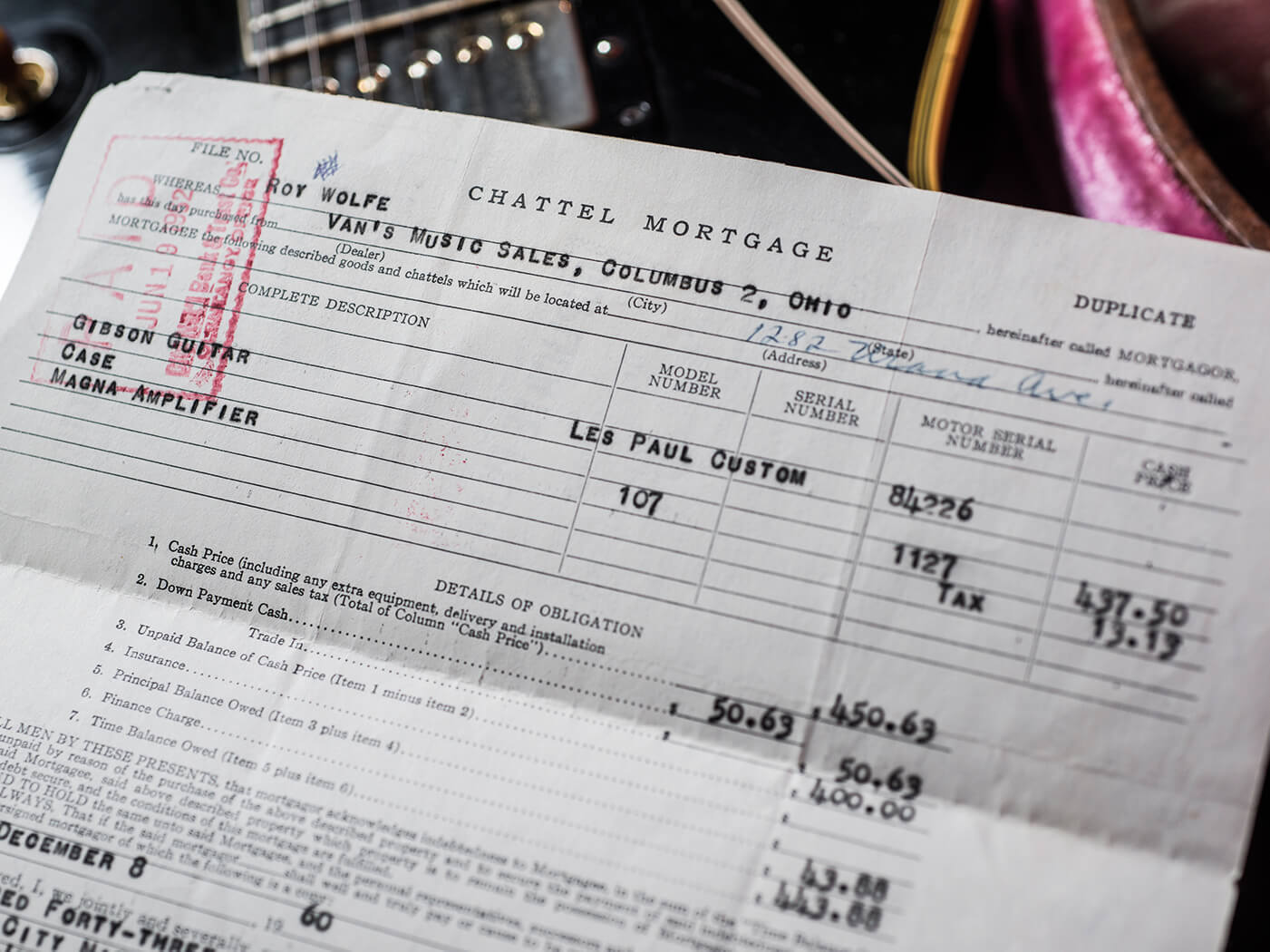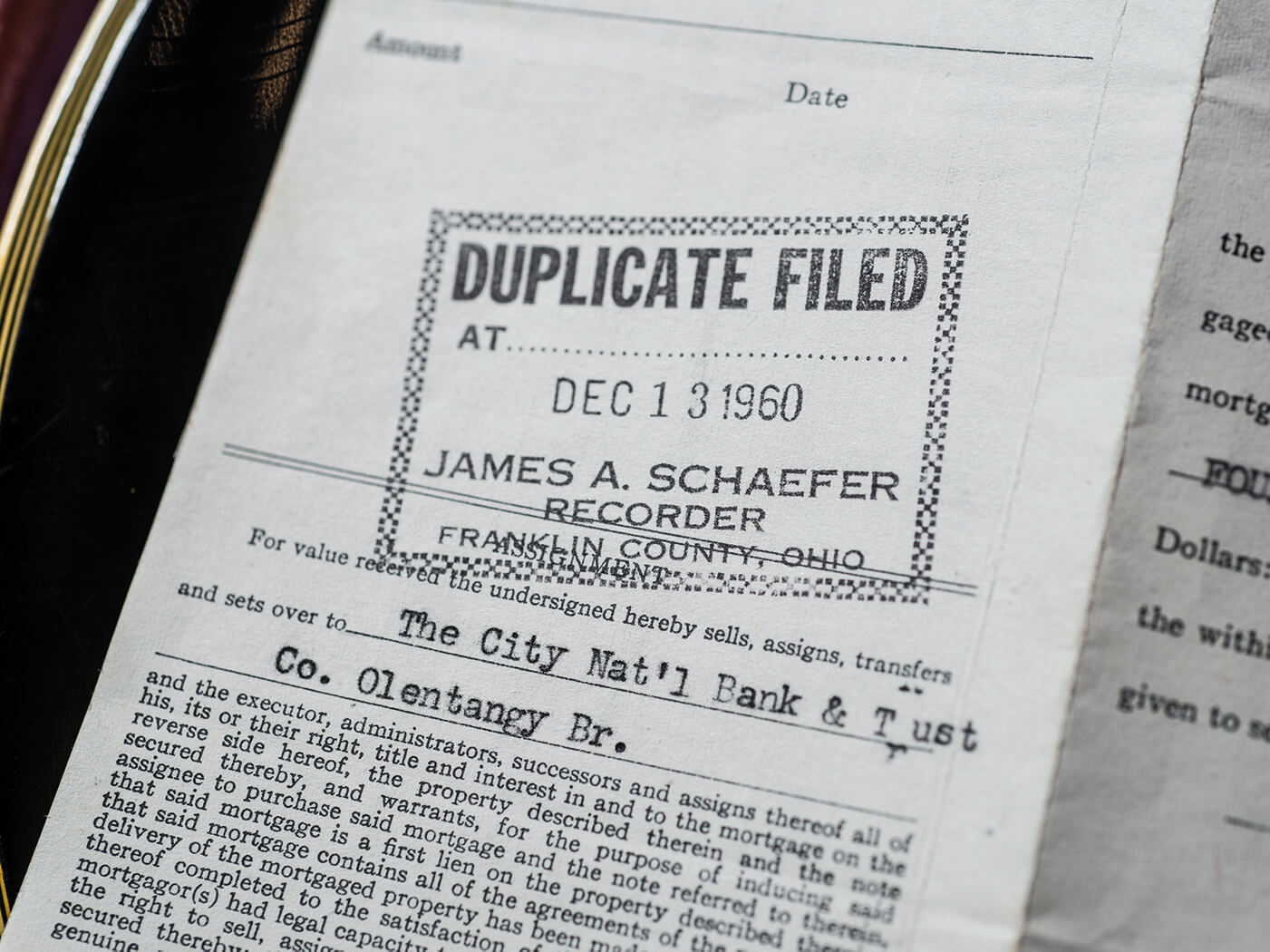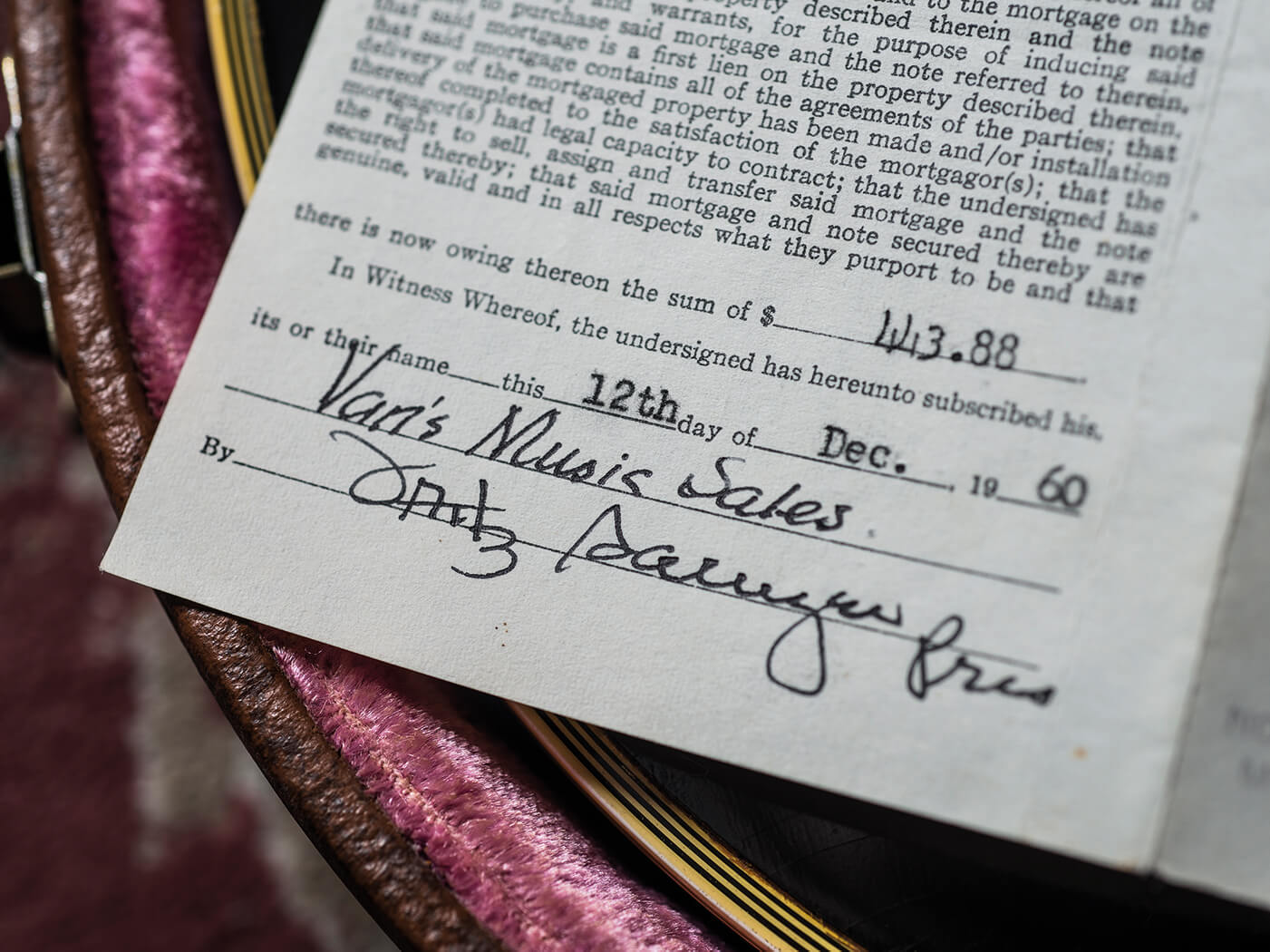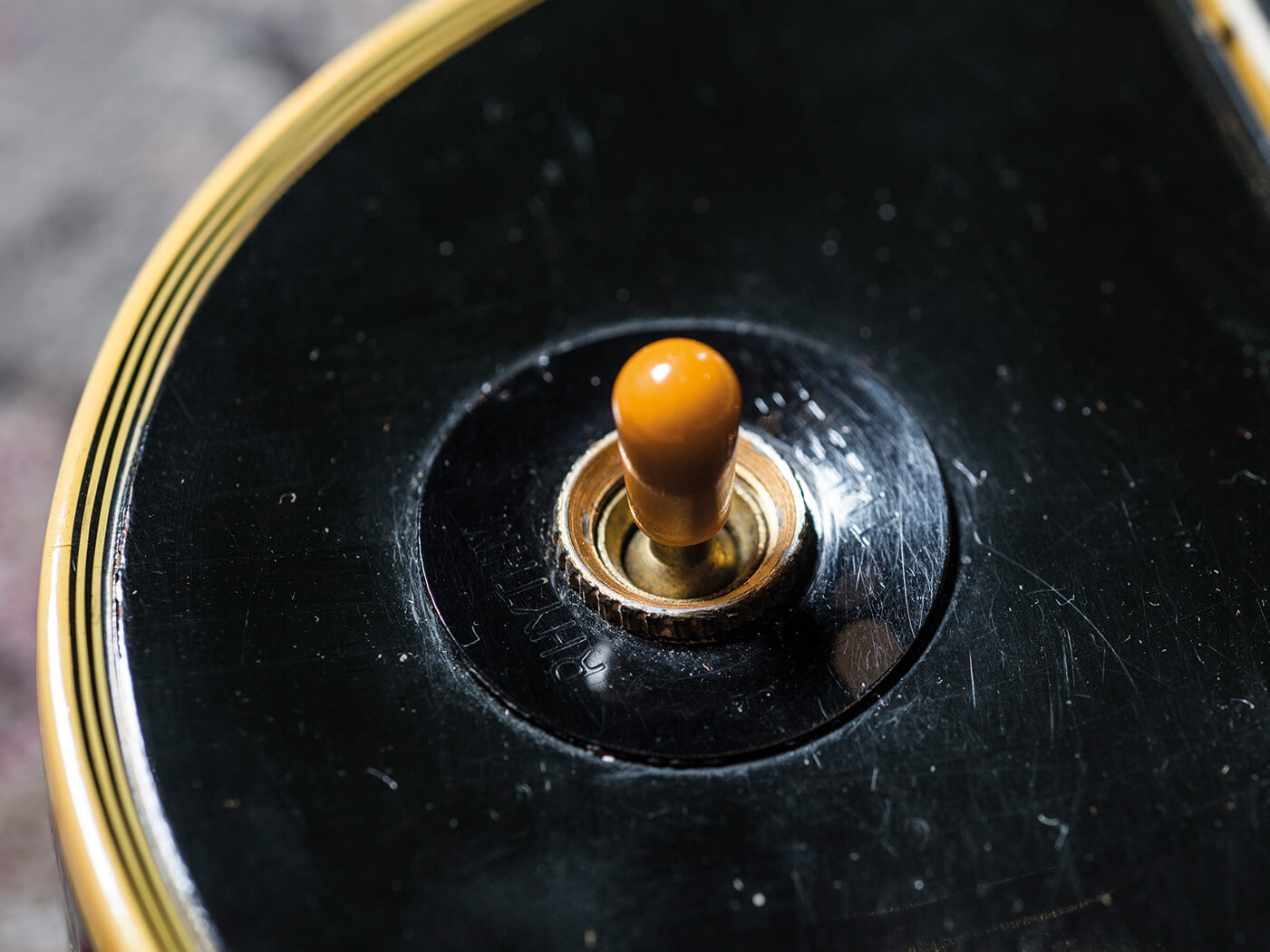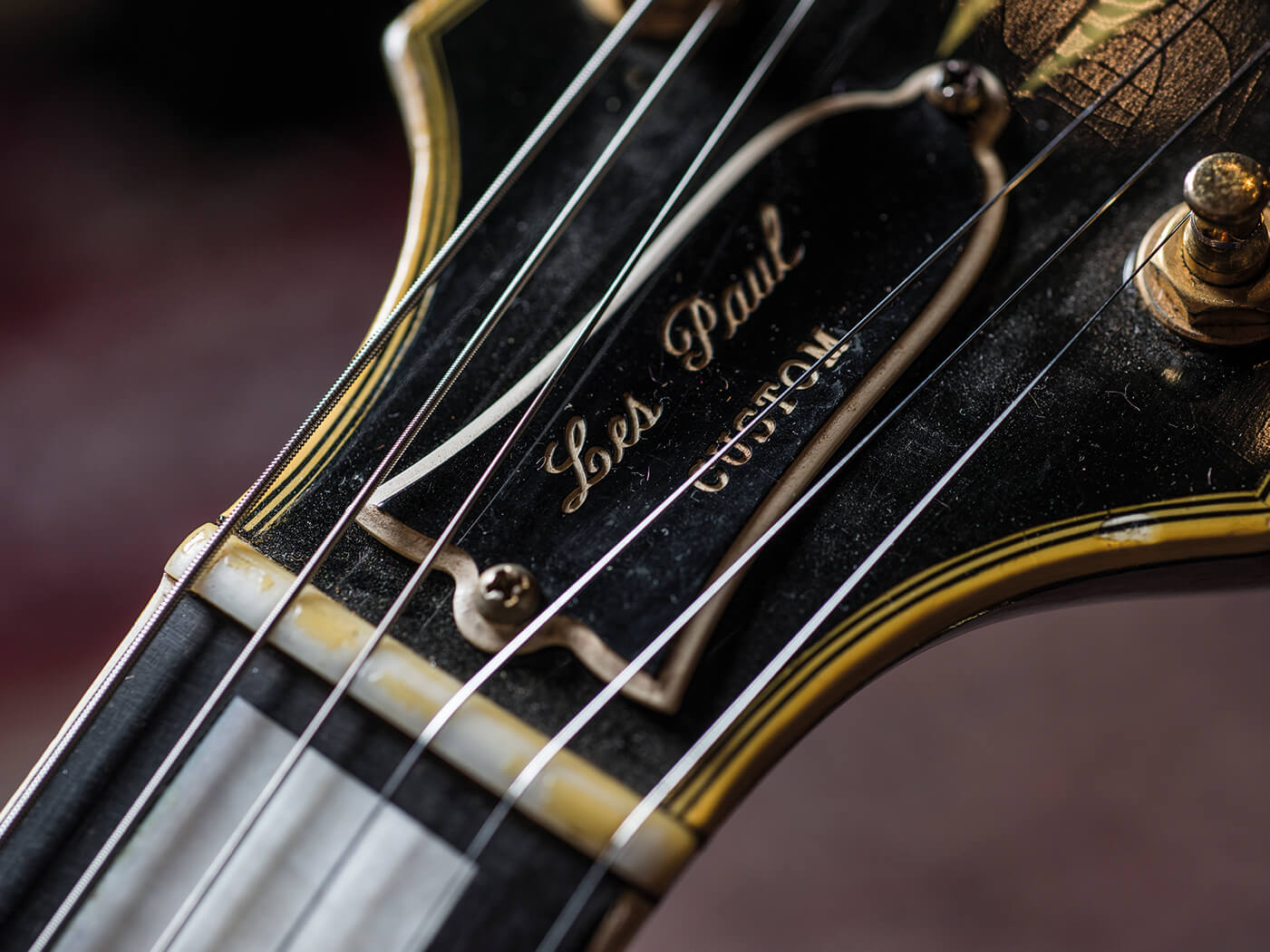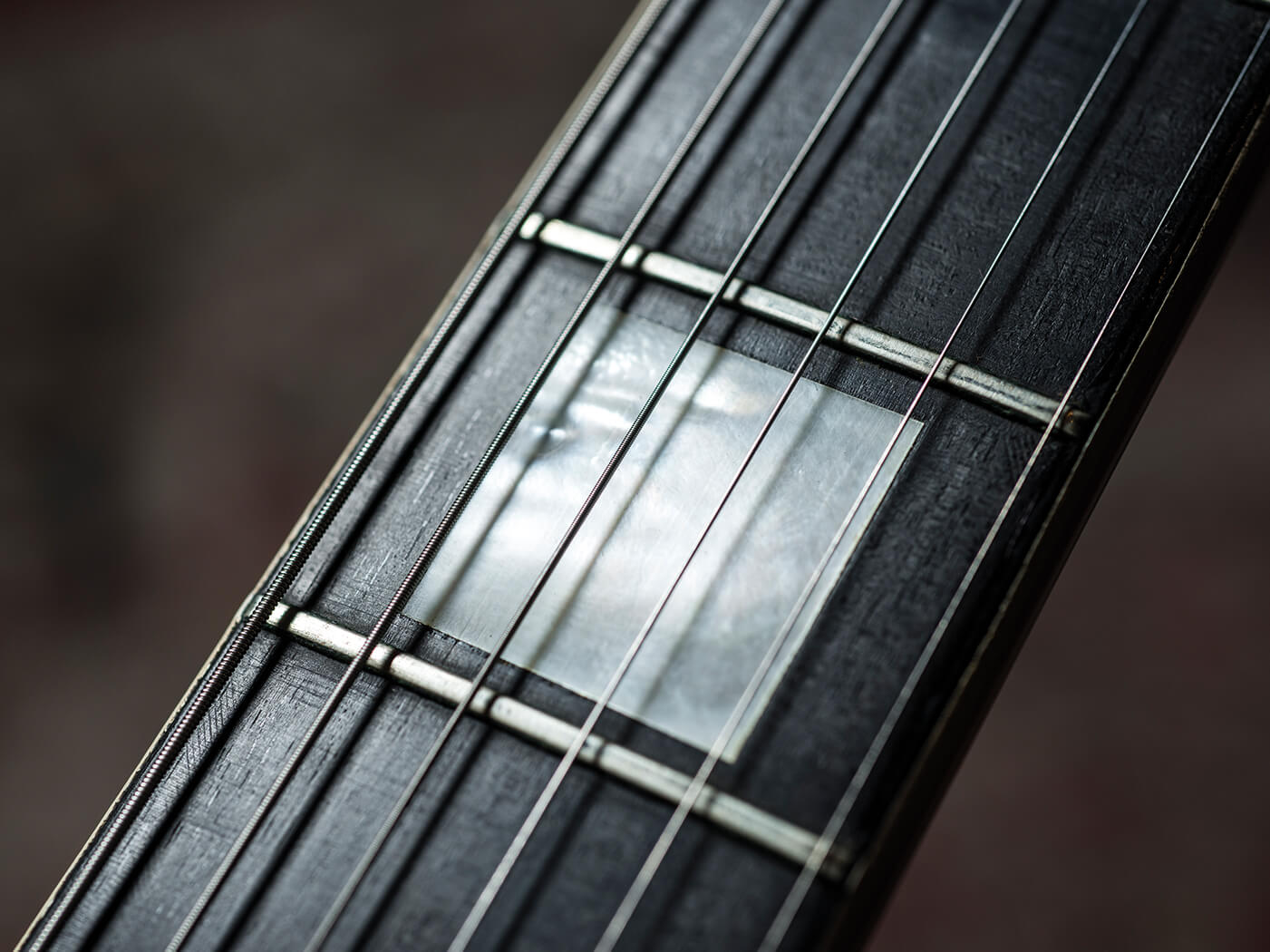Related Tags
Rare Fenders and Gibsons from Guitar Center Hollywood’s overhauled vintage-guitar department
Following an extensive overhaul, Guitar Center’s Hollywood location may have a new look, but what really matters hasn’t changed a bit. We check out some jewels from the vintage room.

An example of the walls full of desirable vintage gear on sale at the Guitar Center Hollywood. All images: Eleanor Jane
Hollywood has its fair share of iconic destinations, from the world-famous Grauman’s Chinese Theater to the star-studded Walk Of Fame – and just about everywhere you turn, there’s a familiar filming location conjuring memories of cinematic thrills from days gone by. Musicians in particular will note Amoeba Records, the Rainbow Bar & Grill where Lemmy himself was a fixture, and the Hollywood Bowl, where this author witnessed Tom Petty’s second-to-last-ever performance prior to his shocking death just one week later.
Guitar fanatics on the prowl for memorable locations would be wise to add Guitar Center Hollywood to the list. Built into a former movie theatre on Sunset Boulevard (where, rumour has it, the first ‘talkie’ picture was shown), GC Hollywood is more than just a big-box store, it’s a love letter to the heyday of rock ’n’ roll.
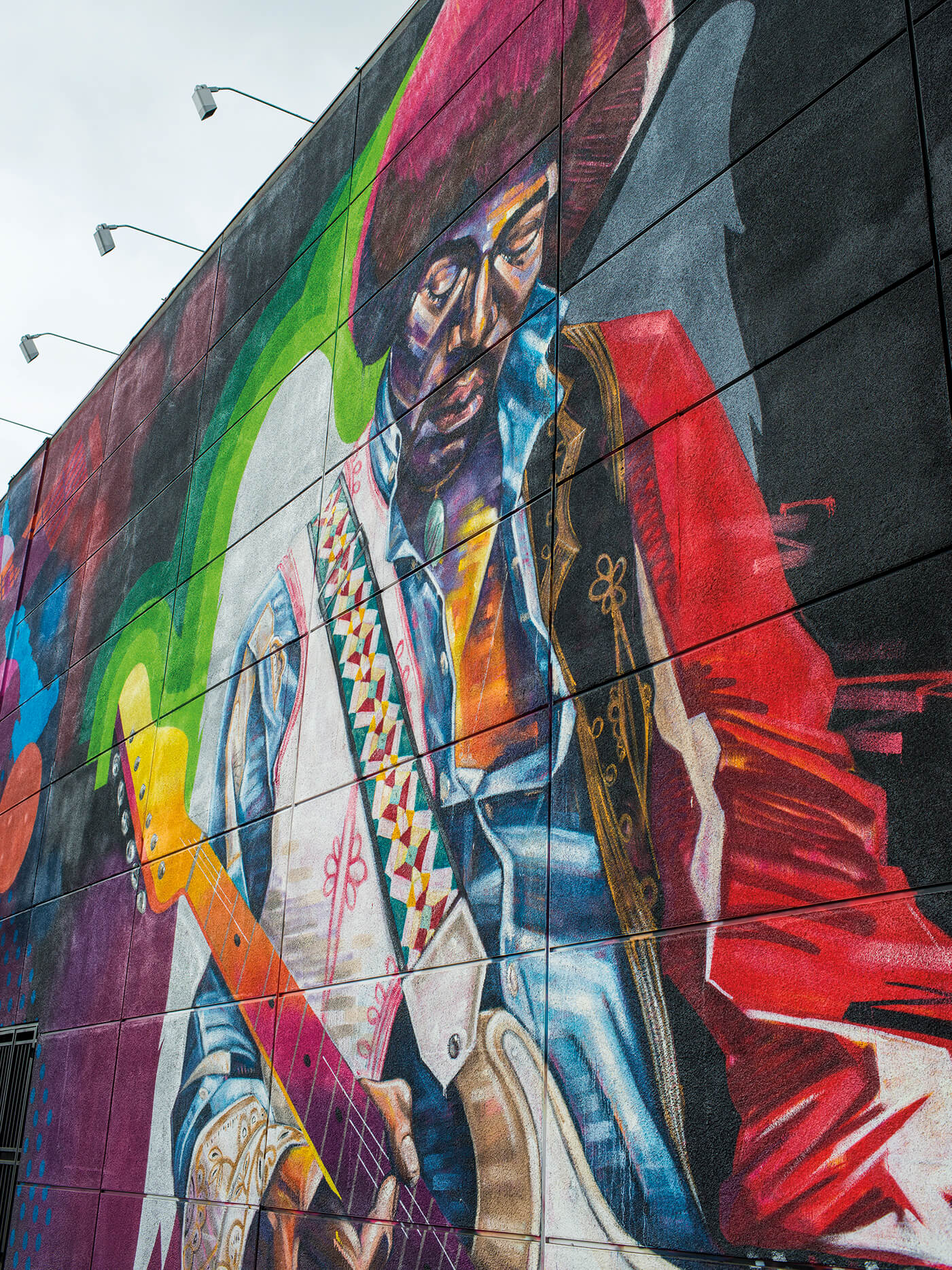
Before you’ve even reached the entrance, you’re accosted by a larger-than-life mural of a mid-solo Jimi Hendrix and to make it through the front door, you’ll first have to navigate the Rock Walk where a host of rock ’n’ roll idols have left behind handprints and index-finger signatures in the concrete beneath your feet. Glass cases line the entryway containing an ever-rotating cadre of gear from such luminaries as Slash, St. Vincent, Zakk Wylde and Eric Clapton, to name a few.
Inside, GC Hollywood has just undergone a multi-million dollar renovation with expanded retail areas for accessories and drums, as well as much larger main floor space for guitars and amps. Gone are the tiny side rooms where used gear once lived, replaced by a much more open and inviting place to trot out your favourite Metallica riffs.
A wall-sized bank of effects pedals gives customers the chance to try out a few favourites (or turn them all on) and the opposite side of the room is populated with a vast array of new and pre-owned instruments just begging to be played.
As you make your way toward the back of the store, a choice presents itself: you can either go up the stairs to grab that much-needed set of strings, or go down to the acoustic department where the fanciest of flat-tops reside. Descend and pass through another set of glass doors to find an immaculate collection of vintage gear, which for many of us is the perfect excuse for a quick trip.
GC first opened in 1959 as The Organ Center, and then later The Vox Center (a change spurred on by The Beatles’ popularity in the States) and has been a fixture of the musical landscape of LA ever since. The store has always addressed changing trends in music by offering a wide selection of not just guitar gear, but also drums, synthesizers and recording equipment. As the vintage-guitar market came into its own in the 1990s, Guitar Center created a dedicated vintage-gear department.
If there’s a rare and exciting vintage guitar hanging on the walls, it’s thanks to Guitar Center’s team of vintage experts. With nearly 300 GC stores around the country, this team is constantly evaluating instruments, poring over photographs and verifying originality to ensure that every acquisition is the right fit for GC’s legendary stable of amazing pieces.
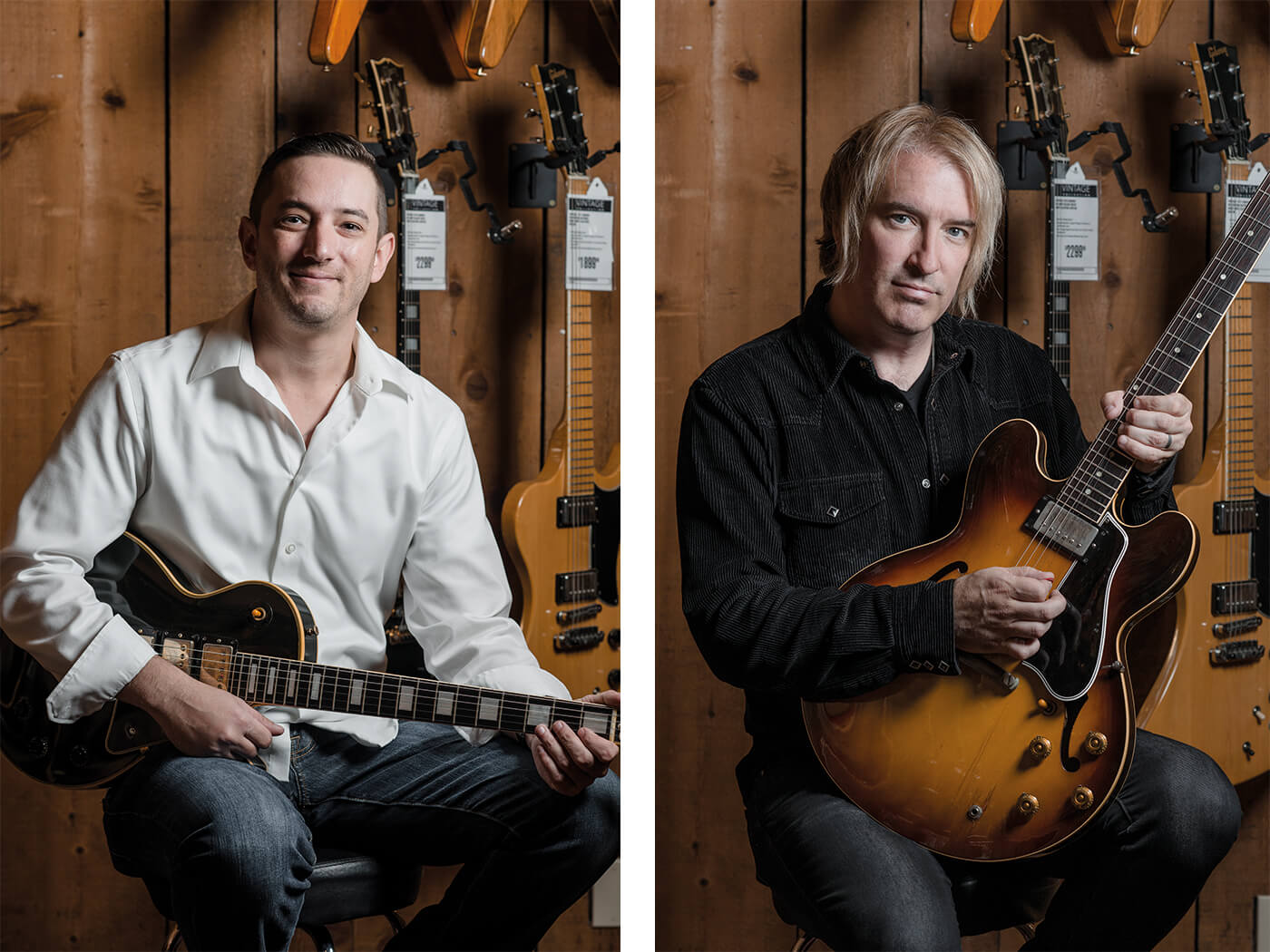
At this sunrise hour on Sunset Boulevard, Nick Conte, vintage sales and inventory manager, takes us through a number of interesting examples from this extensive collection – all for sale – along with the help of artist relations manager Eric Bradley.
1962 Fender Stratocaster ‘Metropolitan Music Mod’
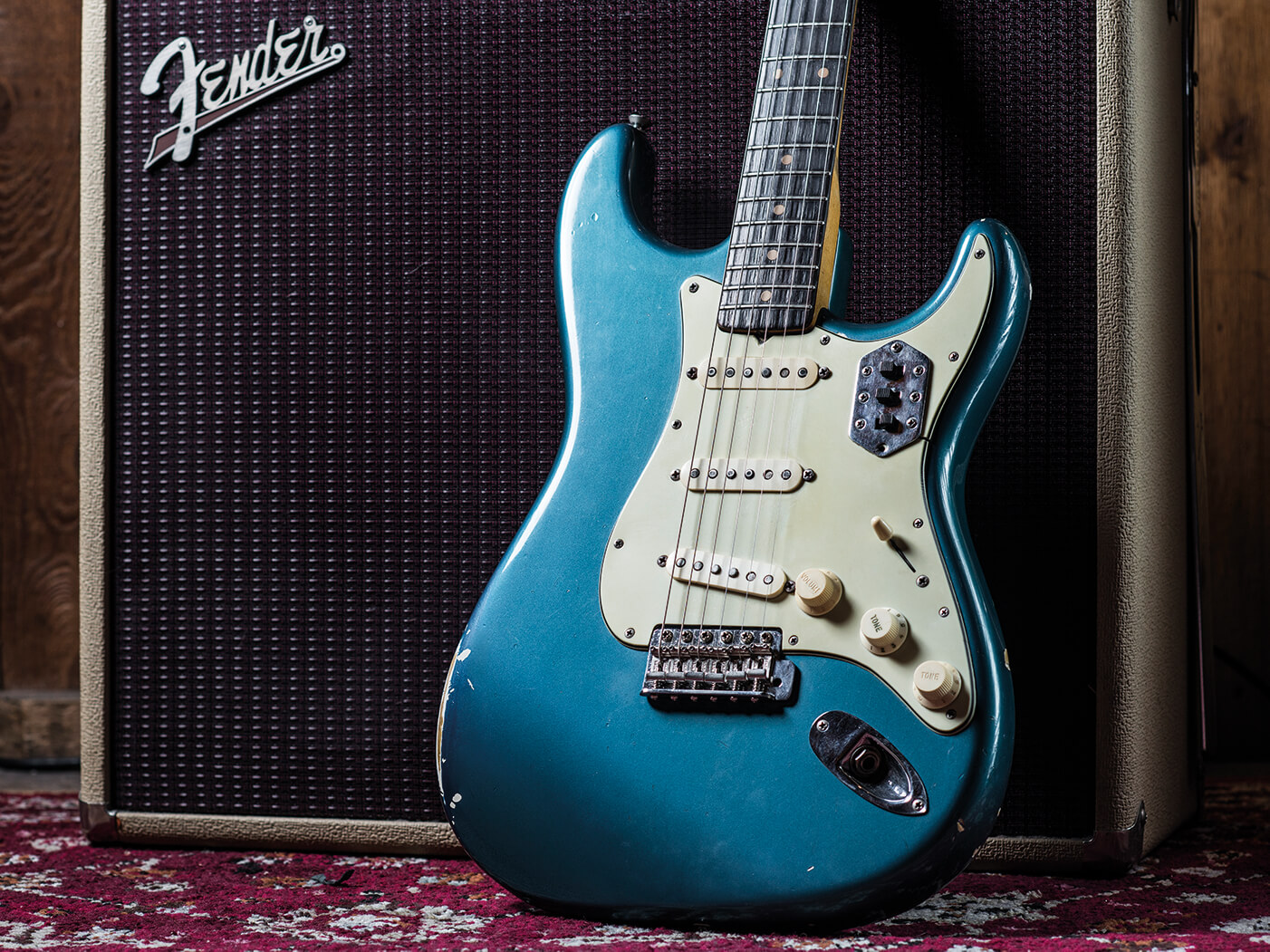
This 1962 Stratocaster immediately captivated us with its very unusual mod: a bank of Jaguar switches for individual pickup selection.
When questioned, Nick filled us in on the story behind the mod: “This came from Wisconsin, but those switches, we’d never seen anything like it. A little while later, John Shults from True Vintage Guitar came across another Strat with the same mod and reached out. He did some research and it turns out that a shop in Milwaukee called Metropolitan Music made a few of these back then for a particular player who liked the setup.”
According to the True Vintage Guitar blog, both guitars have identical wiring, with the same green enamel-coated wire, so it seems that a single tech is responsible. With the ability to select neck and bridge or all-on pickup combinations, it’s exactly the kind of mod that some players would find very useful.
Discounting the mod, a replaced tone knob and a factory refinish in Lake Placid Blue done in ’64, the guitar is otherwise intact. The chocolatey Brazilian rosewood fretboard shows pitting from vigorous play and for such an old refin, the body sure has held up quite well over the years.
1964-65 Gibson Firebird Reverse
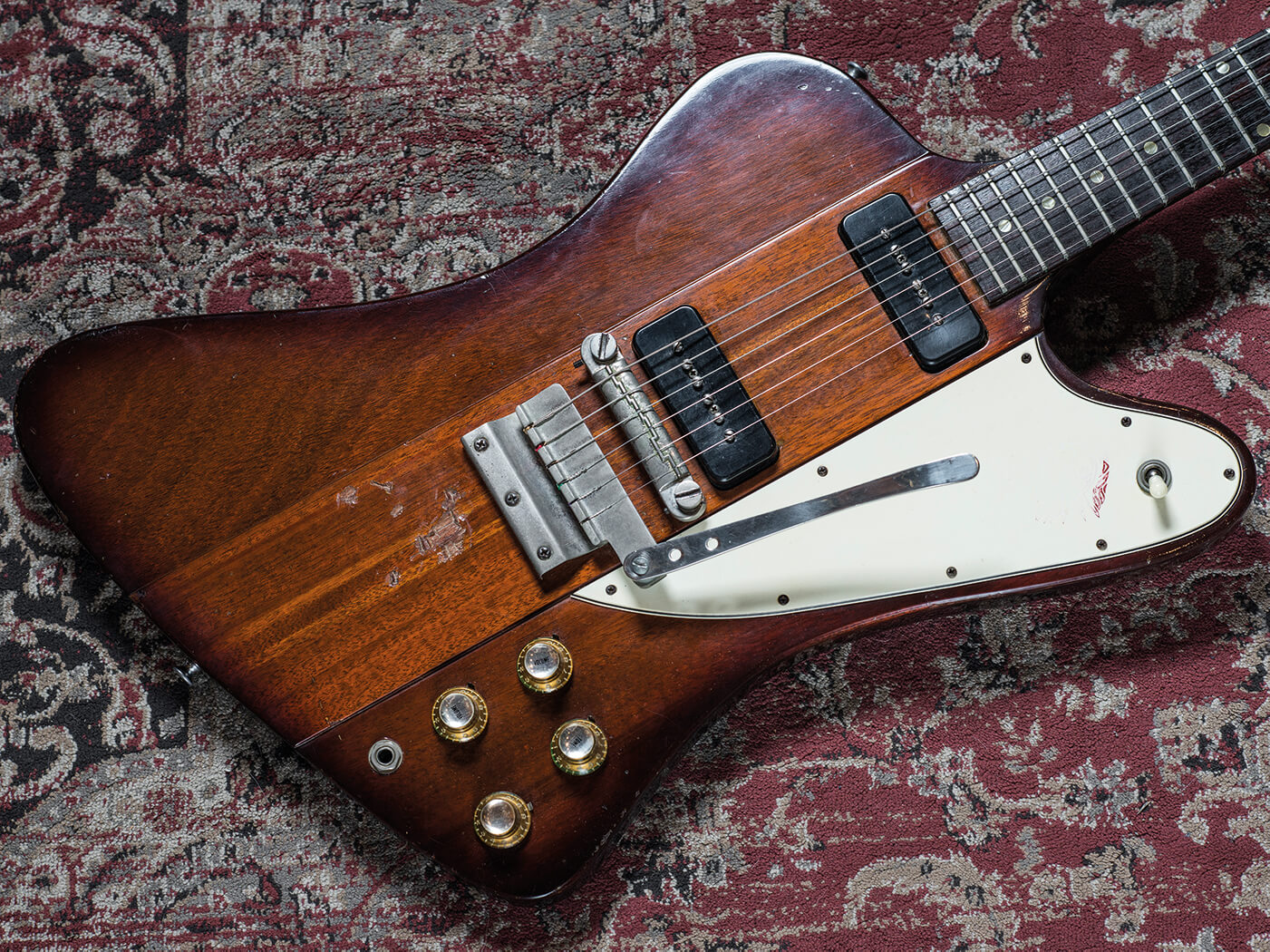
From the time of its introduction in 1963, sales of the Firebird weren’t quite what Gibson had hoped. As the company was moving from the reverse (longer lower horn) to non-reverse (longer upper horn) body styles in the mid 1960s in an attempt to bolster customer interest, there were a few guitars that made it out of the factory sporting features from both models – exceedingly rare birds.
Transitional details include black P-90 pickups instead of the usual Firebird humbuckers found on the reverse body. The plank headstock boasts six-in-line Kluson tuners where one would normally find banjo tuners, the source of many a broken headstock due to their tendency to rest on the back of the case; thankfully, the headstock on this one remains intact.
Like later models, the fretboard is unbound with pearloid dot inlays. Rounding out the package is a short-frame vibrola with the ‘teaspoon’ arm, which allows for adjustable arm length via three mounting holes.
You may have noticed the gouges in the guitar top; while Nick is sure there’s a story there, he admits that he doesn’t know it. “You can tell it’s a screwdriver, someone definitely did that. When we bought it, there was tape covering it, which we removed because we want people to know what’s going on.”
1958 Gibson ES-335

How could we walk by this lovely sunburst ES-335 without acknowledging its greatness? Nick tells us it’s a ’58 model with its original PAF pickups and hardware and those in-the-know should immediately recognise the ‘long pickguard’ as well, a feature phased out during the ’60 and ’61 model years.
Up close, the wear on this guitar evokes a storied past; the neck pickup ring shows signs of vigorous strumming, ground down between the strings. The nickel hardware has oxidised and divots near the heel of the neck describe fingernails left too long, or at the very least, more strum-pattern incursions. The area around the output jack shows signs of a break, though now fully repaired and in stable condition. Leant up against a sweet little Maestro accordion amplifier, it’s hard to imagine another pair so perfectly suited for one another.
Speaking of the body, let’s have a pop quiz, shall we? Dear Reader, tell us: does this 335 exhibit ‘Mickey Mouse ears’? If you haven’t heard that term before, it refers to a very specific type of cutaway shape found only in a few years of production. Over the course of its lifespan, the 335 had a number of different ‘ear’ or ‘horn’ shapes, with the cartoon cutaways being highly prized.
The answer: it does not. This ’58 comes from the pre-Mouse era. Mouse ears are much more full and symmetrical at the cutaway than the slightly gently sloped ones we see here.
As we survey the carefully curated displays before us, guitars racked six high in some places, the feeling of being somewhat overwhelmed washes over us. After all, having to choose a scant few to feature from the dozens represented here is no easy task. After a brief moment, we zero in on our next victim – er, subject.
1968 Gibson ES-335 TDSV

The cool factor of this unusual ES-335 cannot be overstated: Sparkling Burgundy was employed by Gibson as a way to cover up issues with the laminate tops used in the 335 series, but it also happens to look great. Thanks to years of UV exposure, this one has aged into a jaw-dropping metallic orange in areas, its clear coat appropriately yellowed and the red fading away.
The original hardware and plastic is all here, including the witch-hat knobs and Gibson logo pickguard, but the Grover tuners appear to have been added later. The model designation for this guitar is ‘TDSV’ which stands for Thinline/Dual Cutaway/Stereo Varitone. That’s right, this 335 has an original Varitone wired in, standard equipment on the 345 and 355, but optional on the 335.
This one has the rare black surround denoting the notch filter positions and while many players seem to dislike this little tone circuit, it’s actually quite useful as a secret weapon for fine-tuning the sound of the guitar.
Mary Kaye’s Telecaster
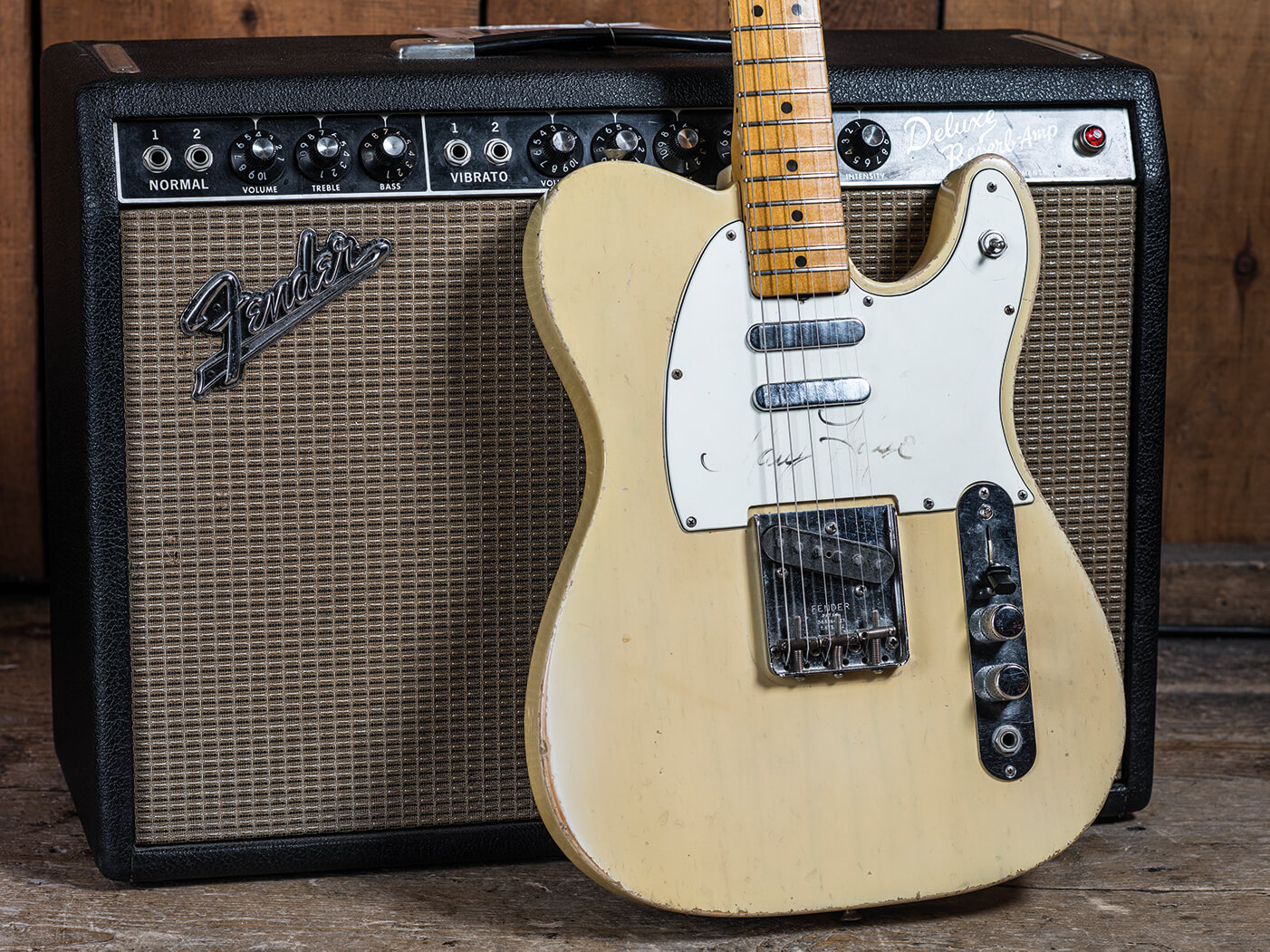
The great Mary Kaye was a Las Vegas guitarist and vocalist credited with popularising the ‘lounge’ genre with The Mary Kaye Trio (formerly known as The Mary Ka’aihue Trio after her original surname).
In guitar circles, she is perhaps most enduringly famous for, however erroneously, her association with a certain blonde-and-gold Stratocaster which has become synonymous with the singer thanks to a one-off promotional photoshoot in 1956. She never actually owned the instrument, yet the name persisted.
Unlike that Strat with the gold hardware, this 1967 Telecaster is a proper Mary Kaye guitar. She performed regularly with this maple cap Tele, which bears some modifications favoured by Kaye herself, most notably the addition of a second neck pickup in the middle position. This pickup is engaged via a switch added to the treble-side horn, which works in tandem with the original three-way switch for a host of new pickup combinations. There’s also an additional quarter-inch output jack on the control plate for bypassing the guitar’s electronics.
Mary Kaye sold this guitar to the shop that maintained her guitars in Reno back in ’93, signing the guard as she handed it off. On the front, her signature is largely worn away, but on the underside, Mary left a note for her favourite shop:
AJ Thank you
God bless you Peter
Love, Mary Kaye
6/10/93
1950 Fender Broadcaster
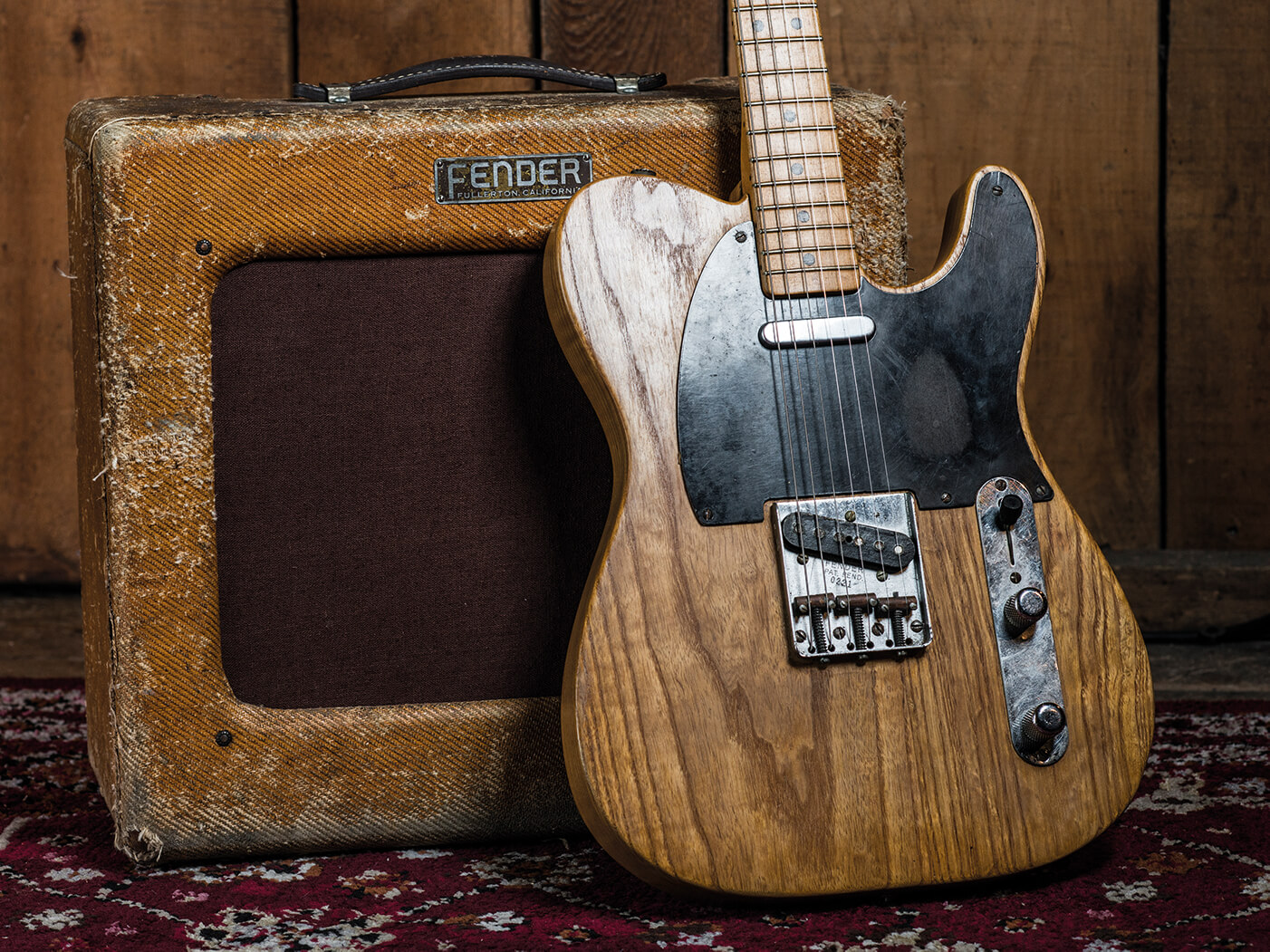
Eric Bradley grabs a rather haggard-looking guitar from its perch and places it on the inspection table, eager to show off their recent score: a 1950 Fender Broadcaster stripped and weathered like a barn door. “This one came from New Orleans, and the people we bought it from found it in the closet of the original owner,” says Eric.
Though rough-hewn from the strip job, this guitar still has some original finish in the cavities and around the bridge. In a certain light, there’s a bit of three-dimensional figuring in the wood which makes us wonder what it might have looked like in an untouched state. Otherwise, every original part is present: flat-head screws, bridge, heavy-knurled knobs, tuners, nut and even the uncut ‘Broadcaster’ logo on the headstock, placing this guitar before all the unpleasantness with the Gretsch Company.
If you’ve ever heard someone describe the Telecaster as a “plank,” this guitar certainly fits that bill. There’s a somewhat homemade quality about it, the feeling of the body against your ribs; it’s as if Leo himself hadn’t quite perfected his novel idea with its sharp edges and still-present tool markings.
Take the string ferrules on the back: Nick tells us to pay attention to the uneven spacing of the countersunk holes. “There was no routing template for this! If you ever see a Broadcaster with perfectly straight ferrules, it’s most likely fake, or the body from a later Telecaster.”
Sadly, we don’t have the time to plug in but strummed acoustically, there’s really only one word for it: loud. It’s also an extraordinarily heavy guitar with gobs of sustain and a stinging midrange. With high action and jacked-up saddles, it plays like a bucking bronco.
1959 Two-pickup Les Paul Custom w/ Bigsby
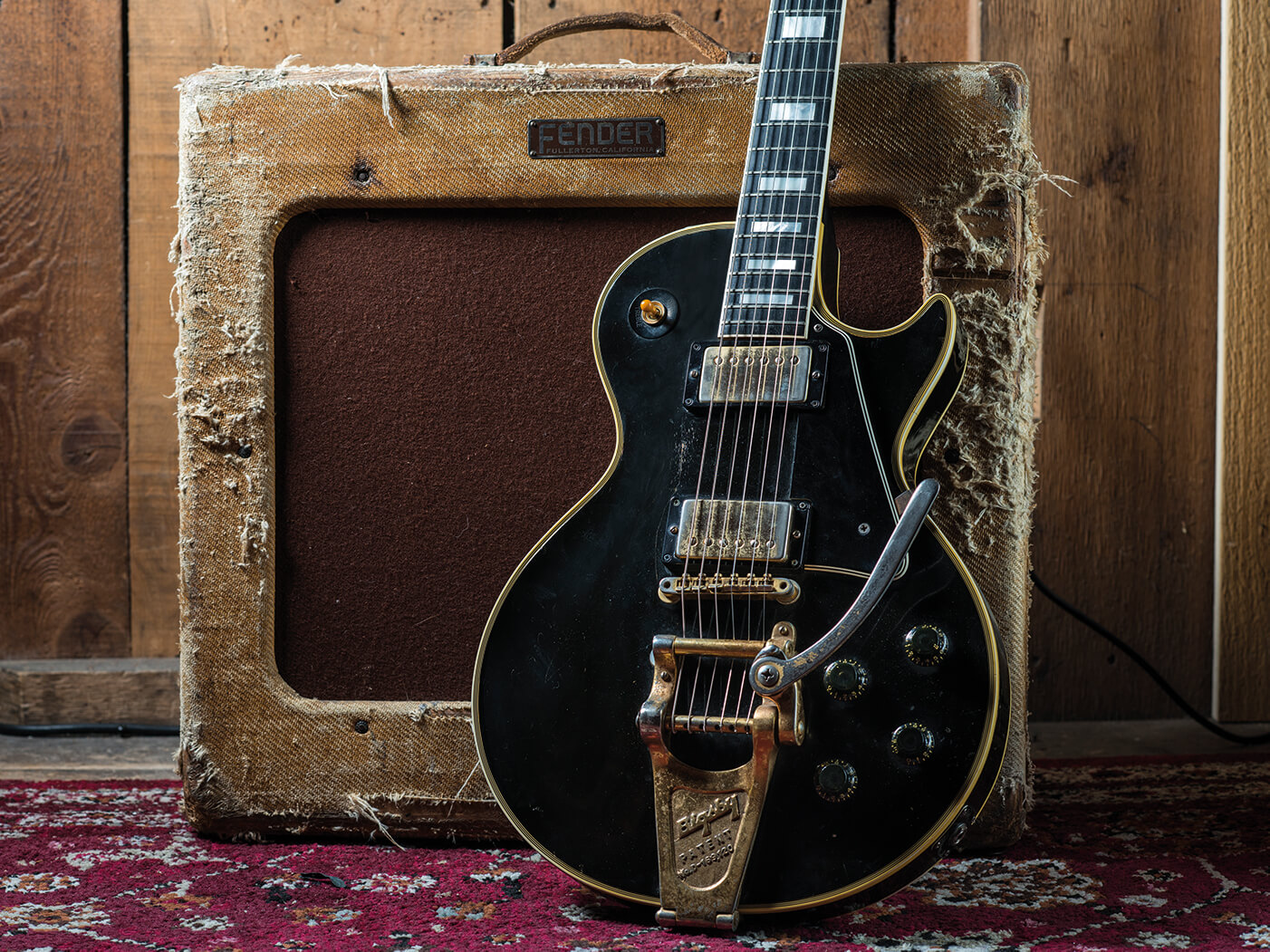
“I don’t think I’ll see another one of these in my lifetime,” says Conte as he’s handling a gorgeous ’59 Les Paul Custom. What’s so impressive about this guitar is that it only has two pickups instead of the usual three, a feature that doesn’t seem all that rare looking back from the present day. Believe it or not, there are only a handful of two-pickup Customs known to exist.
Unique features of this old Gibson include the Imperial buttons on the gold Patent Pending Grover Rotomatic tuners, a curious addition assumed to be legitimate given the matched age of the gold hardware on the guitar.
The factory Bigsby has also lost much of its gold plating, worn away by years of use, imparting an air of class to this already classy instrument. There are pearloid inlays covering the spots where stoptail body inserts would normally be, a sure sign of Gibson installing the vibrato system after the body had been drilled.
1958 Gibson Les Paul Custom ‘Black Beauty’
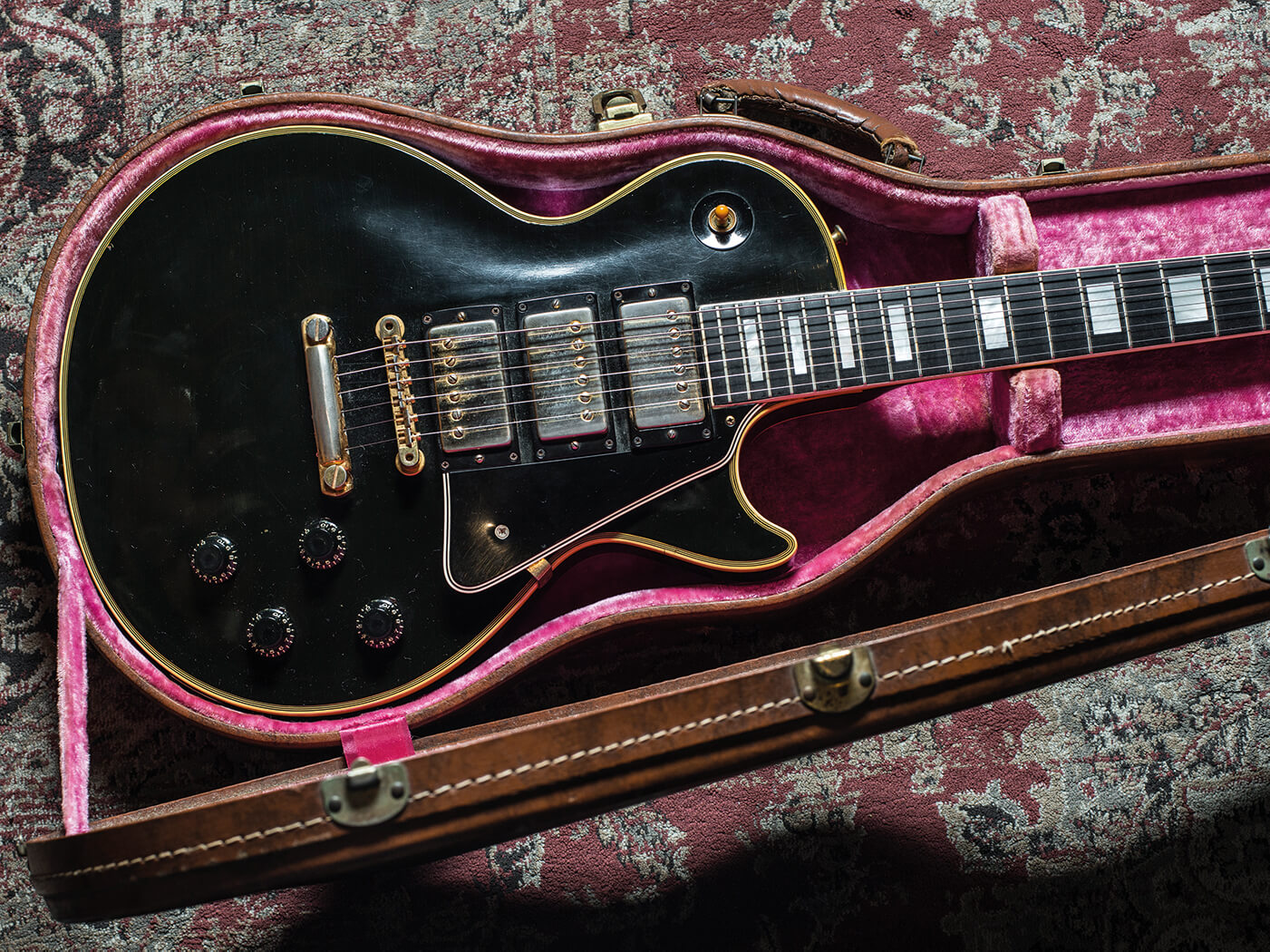
This ’58 Black Beauty is what the preceding guitar would’ve looked like if not for the special-order status. It’s a complete example of the model, with its triple gold-plated PAF pickups, all-original aged hardware, amber switch tip and a perfectly checked, inky black finish.
The original bill of sale in the original pink-and-brown case reveals it was bought from Van’s Music Sales in Columbus, Ohio along with a Magnatone amp on 8 December, 1960. The sale was financed via Chattel Mortgage in Franklin, Ohio: “Back then, you could walk into any bank and they’d finance the purchase for you,” says Nick.
With all of the rare and wonderful items in stock at GC’s Hollywood location, it’s easy to get lost in the magnitude of it all. However, our encounter with Nick and Eric leaves us feeling confident that Guitar Center’s vintage team are just as excited about vintage gear as we are. Hollywood’s in good hands, we think.
Visit guitarcenter.com for more info.

